Courses
Landfill Golf Part 2- Paul Miller, Architect Interview
![]()
.gif) After a recent and very enjoyable round of golf at the Phoenix Golf Links (which was constructed atop a former landfill) in Columbus Ohio, I had several design related questions running through my golf-oriented mind.
After a recent and very enjoyable round of golf at the Phoenix Golf Links (which was constructed atop a former landfill) in Columbus Ohio, I had several design related questions running through my golf-oriented mind.
I decided to contact a golf course architect who is currently designing just that, a golf course atop a former landfill. I contacted Mr. Paul Miller of Miller Golf Course Design, and he was kind enough to take some time to answer some questions about golf courses that are constructed atop former landfills.
A little about Mr. Miller himself. Paul Miller is the President of Paul Miller Design, Inc., a golf course architecture firm in Northfield, Minnesota. Mr. Miller entered the profession of golf course architecture with a degree in landscape architecture from the University of Minnesota in 1987. He has 31 years of experience in the golf course design, landscape architecture and golf course maintenance fields. Over the past 17 years he has successfully managed numerous golf course design and construction projects for all levels of private golf clubs and public golf facilities throughout the United States. Prior to opening Paul Miller Design, Inc. in July of 2004, Paul was a partner at Gill Miller, Inc. At Gill Miller his design portfolio included The Legends Club and The Meadows at Mystic Lake, that were both named top ten new golf courses nationwide by Golf Digest magazine. Currently PMDI has golf course projects in Illinois, Wisconsin, Minnesota and Iowa.
How many courses have you designed or consulted on that were built atop landfills?
The firm I was with until 2004 had completed several landfill golf course projects prior to the Burnsville landfill project that I am currently working on:
Paul Miller Design has established a multi phase golf course implementation strategy for Waste Management at the Burnsville Sanitary Landfill where an 18 hole public golf course will be the end use product when landfill operations are completed. The golf course at Burnsville Sanitary Landfill will be developed as the landfill cells are brought to final grade. The development is proposed to take place in 4 major phases starting with a practice range and four golf holes. The final phase will see the creation of an 18 hole, 6,900 yard golf course that takes advantage of the dramatic views into the surrounding river valley and Minneapolis skyline. The golf course will have a distinct Scottish flavor with hummocky mounding, rugged sand and turf bunkers, waving grasses and native plantings that will enhance the unique golf experience that this “island in the sky” will offer to area golfers.
Is this something that will become more "commonplace" as land becomes more expensive?
Landfills tend to be municipal projects or partnerships where the golf course is a valued end use project. The front-end regulations, construction costs and long time maintenance issues would offset the cheaper land. I think landfill projects will continue to represent a specialized sector of the golf course market. Landfills are generally located in highly populated areas with good access so the potential golf market at landfill sites is good. Revitalizing the area around a landfill with a golf course as part of the development seems to work well.
Is landfill land cheaper, what I mean is, can the course developer get this land “on the cheap”?
The land is cheaper. However there are long-term restrictions on the land that cloud the legal liabilities for the new owner. I would envision development partnerships where the land would be leased or developed without taking responsibility for methane collection and environmental issues.
Assuming the developer buys this land, who remains responsible for what lies below?
My understanding is that regulations call for up to 30 years of responsibility for the after treatment of the landfill. This is not something that developers would be able to provide in most cases. There was some legislation enacted in 2002 that offers some protection from long-term liability issues. Older landfills would possibly have less long-term legal issues but it invariably costs more for construction and maintenance on a landfill golf course.
Could one get the federal or state governments to provide money in exchange for building a golf course on a brownfield or superfund site?
The history of most landfill golf course projects represents some involvement in the government in reclaiming the land as a viable commercial development.
What sorts of hardships are encountered when planning a course on top of a landfill area? (i.e. collapse, gasses, etc…)
Settling, methane collection / release, and ground water issues are the big three. Newer landfill regulations with improved capping and methane collection reduce some of the problems that were inherited on older landfills that were not properly capped. Generally the golf course features are built above the landfill and final landfill cap so that you have a minimum of 3’ – 5’ above the cap over the landfill.
Are these types of layouts destined to be of the LINKS style? Can trees be planted or do the root structures cause instability?
Most trees exist in the upper couple of feet of the soil so its not impossible to plant trees on a landfill. The nature of the starting terrain suggests more of a links layout with naturalized areas less impacted by settling or shifts in the terrain. In the mounded areas there could be 10 – 15 feet of fill, which can easily accommodate tree roots. There is remedial value in trees, particularly poplars, taking up some of the water, minimizing leachate issues and providing root structures that minimize erosion and potential cap exposure. Since the majority of the settling happens in the first few years after closure a tree planting master plan will allow the trees to be planted at a time when the landfill is stable.
Is the EPA heavily involved in all facets of the construction?
Landfills are highly regulated and various agencies on the federal, state and local levels review and approve the construction plans. The agencies are most actively involved on the front end to ensure proper construction methods. Site reviews during construction vary by locale and project requirements.
Is the landfill "capped" with concrete and then fill dirt added over the top of it?
Landfill caps are designed based on the specific requirements of the remediation site. Clay or geo-synthetic liners are frequently used as the landfill cap with the golf course built on top of the landfill cap.
Are there limitations as to what types of heavy equipment can be used to shape the holes?
From a practical standpoint bulldozers are more manageable than earth scrapers. Since the golf course is constructed entirely out of fill, placing of the fill is the largest component of the earth moving. Heavier equipment would move the material in place to be shaped by bulldozers. Like every construction job the amount of moisture in the soil impacts the use of heavy equipment. Landfill operations are a large enough industry to have a strong track record of construction equipment that performs well on landfills. Haul roads developed and used during landfill operations are the most stable access points for large equipment.
Are you familiar with Phoenix Golf Links in Columbus, Ohio? It was built on a former landfill.
I know of the golf course but I have not played it. Landfills by definition are elevated so you have dramatic views into the surrounding area. The Burnsville site has been described as “an island in the sky”. You can get a sense of the golf course by being on the landfill in the early evening with a bit of a surreal mystical quality that you wouldn’t expect being on top of a landfill. People love the views.
Again, thanks for answering a few simple design and construction questions about landfill golf courses. I would bet, that a lot more of these types of golf courses will be created in the future.

Golf Course architect Paul Miller.
Stop by and check out some of Paul’s current and past course designs at PaulMillerGolf.com
- LIKE0
- LEGIT0
- WOW0
- LOL0
- IDHT0
- FLOP0
- OB0
- SHANK0
Courses
The Scottsdale Experience, Part II: Boulders, Troon North, and Camelback

It’s been four years since my last desert golf trip in Arizona. For an area so rich in good golf, that’s too long to wait for a return trip.
Our last visit to Scottsdale brought my family to the Fairmont Princess during the Christmas season. We just like to visit this time of year because everything is decorated for the holidays. While there, I was able to play at TPC Scottsdale, Grayhawk, and We Ko Pa–all stunning tracks for every handicap level.
For this trip, now four years removed, we wanted to experience two different types of Scottsdale resorts: The first two nights at Boulders Resort and Spa, about 30 minutes north of town, surrounded by (you guessed it) boulders and nature. For the second two nights, my wife wanted to be a bit closer to the city life so we picked the JW Marriott Camelback Inn, minutes from Old Town Scottsdale.
There are many differences between the two resorts, but both somehow maintained the vibe of being in the Valley.
BOULDERS RESORT AND SPA
The Boulders Resort and Spa sprawls out across an enormous piece of property, which includes two award-winning, Jay Morrish-designed golf courses that both rank well as playable golf courses in the state. When you check in, they give you a map and a flashlight to help you navigate the grounds at night. The rooms (or casitas) are villa-esque, complete with your own fireplace and wood to burn on cold nights. The place just smells like fresh air and chimineas.
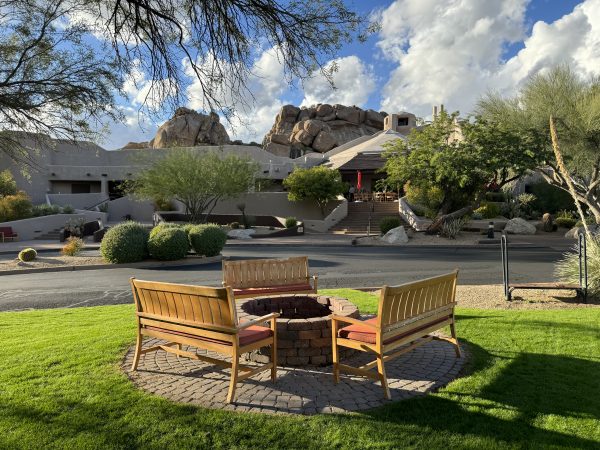
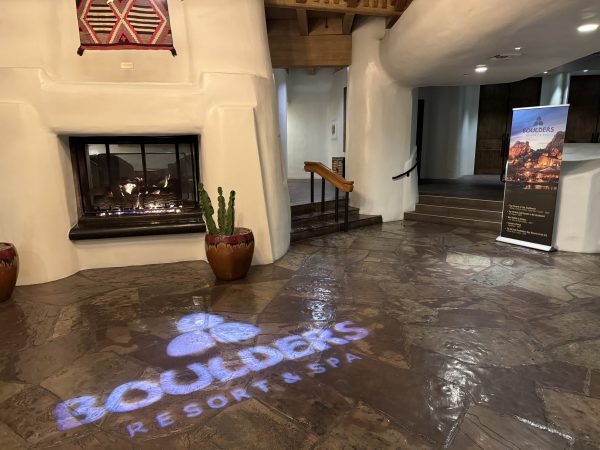
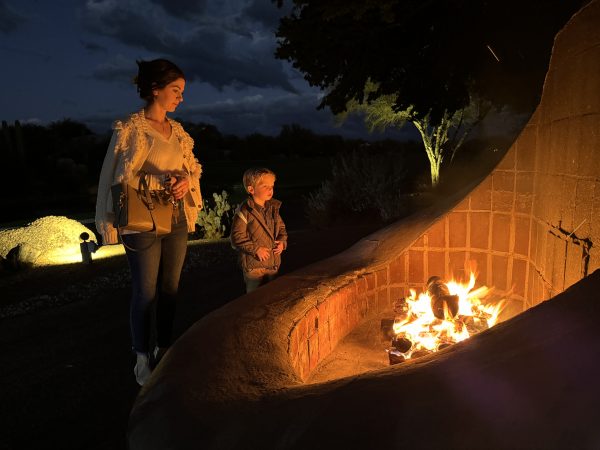
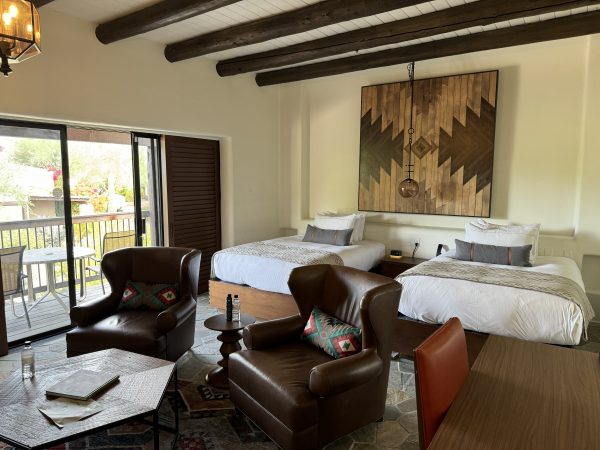
The lodge itself is nestled beneath a small mountain with accessible hiking trails along both sides. Behind the main lobby sits a good-sized pool, which was heated when we visited and allowed for swimming in November. Temperatures this time of year are typically pretty chilly, especially for early morning golf, so to be able to swim in warm water was a nice treat.
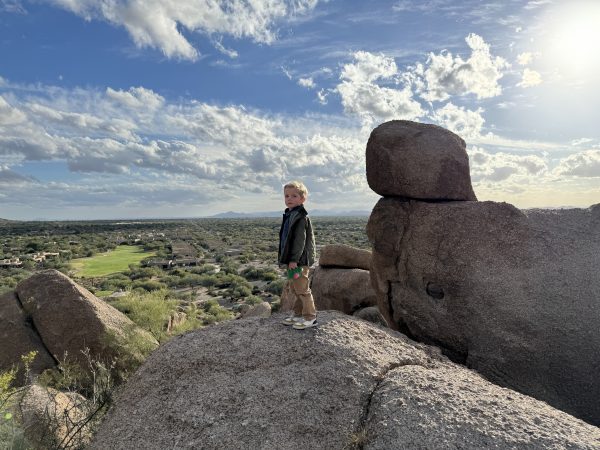
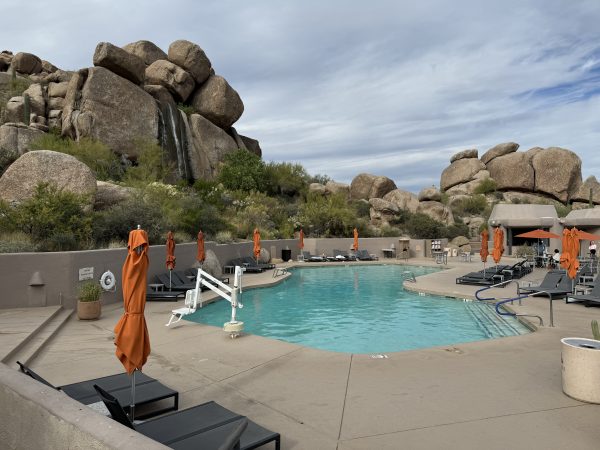
The two courses are both on the property, making Boulders Resort a truly ‘never have to leave’ type of resort. There are also multiple restaurants on-site, including Bogey’s Bar near the pro shop and 18th greens for both courses. Boulders is home to about 400 golfing membership families but also remains open for public play as well. The members and public alternate courses each day, which apparently works great and keeps a high-season traffic light on both courses. I played the North Course but also walked the South to get a good feel for each.

View from clubhouse over 18 of South Course
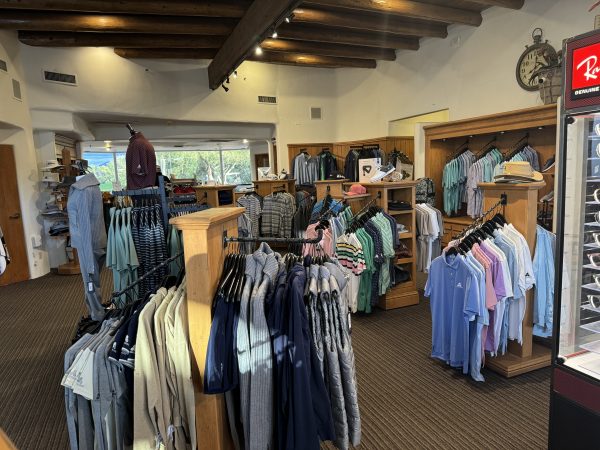
Boulders Pro Shop
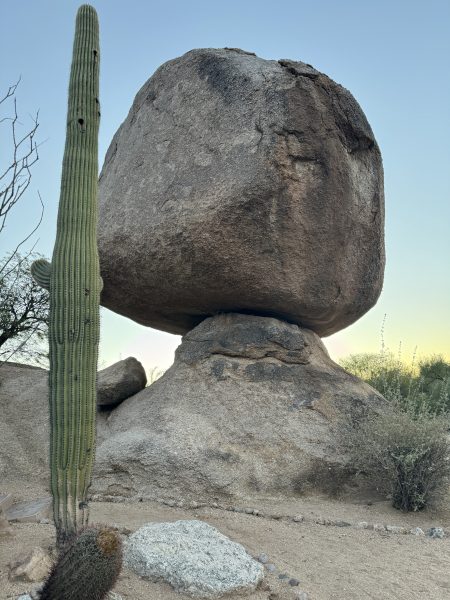
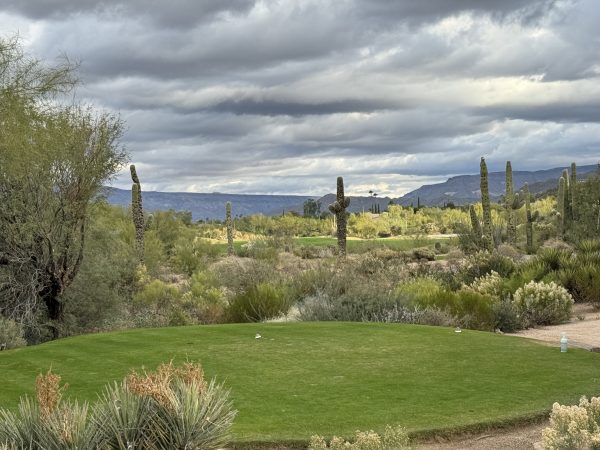
Number one tee- Boulders North
The North course tips out at 6,959 yards but can play as short as 4900 from the red tees. There are six tee box options in total, which helps on a desert course like this because between the frequently watered green grass come many different varieties of wasteland carries and sandy ravines. With options on tees and course length, many of the challenging shots can be added or taken out depending on skill level.


You can expect a lot of uneven lies at Boulders, as most of the fairways and playing surfaces undulate to blend right in with the surrounding mountains. Saguaro cacti are in every site line, but the predominant feature of both courses is the elephant-sized boulders on nearly every hole. Some appear to teter on their end, ready to roll down into the bunker where your ball is resting.

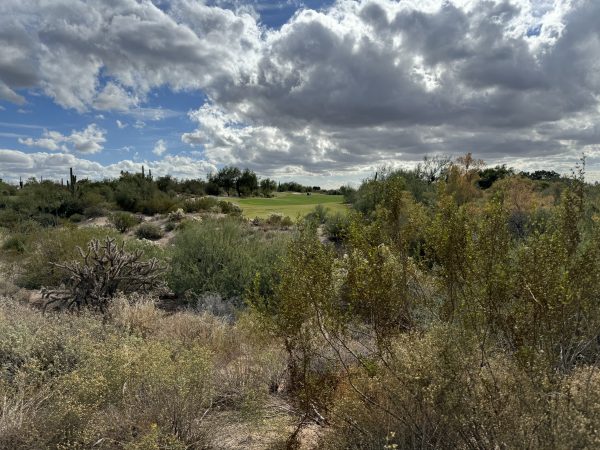
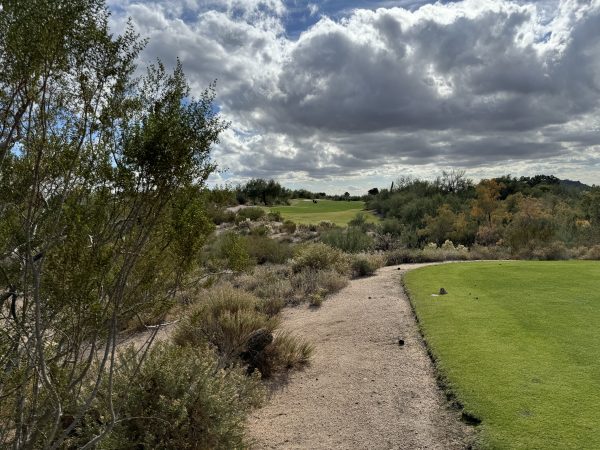
Of course, like most desert-style courses, errant shots are findable in the sandy soil, but not without risk of being pricked, poked, or bitten. My general rule is that if I can’t see it from the green grass, I’m better off not wandering too far out in search of what might be painful to find. Drop a ball and take my medicine. That proved to be true at Boulders as well. There are many thick areas just off the fairway where man should not be. And a better golfer than myself would only look in that direction to view the beauty of the Sonoran Desert.
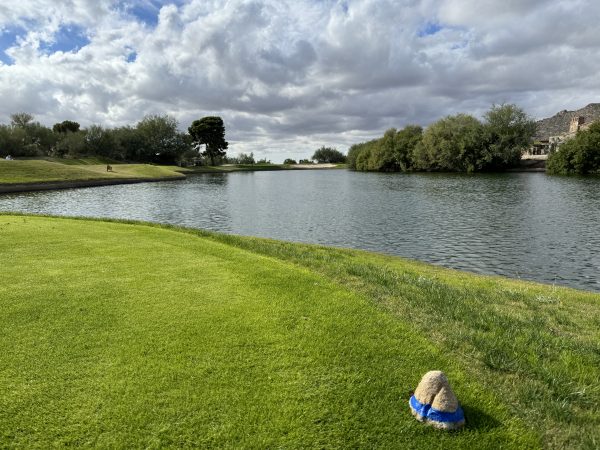
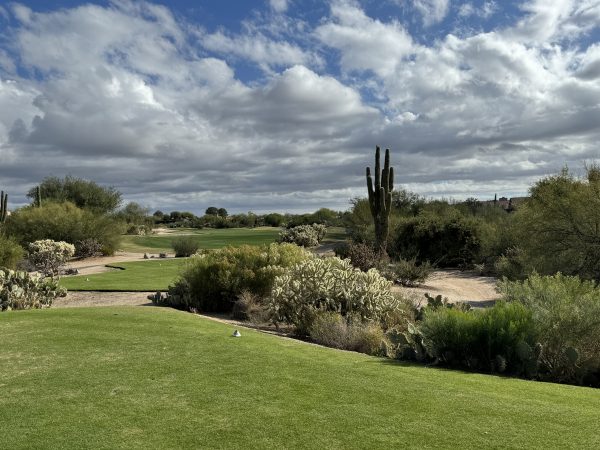
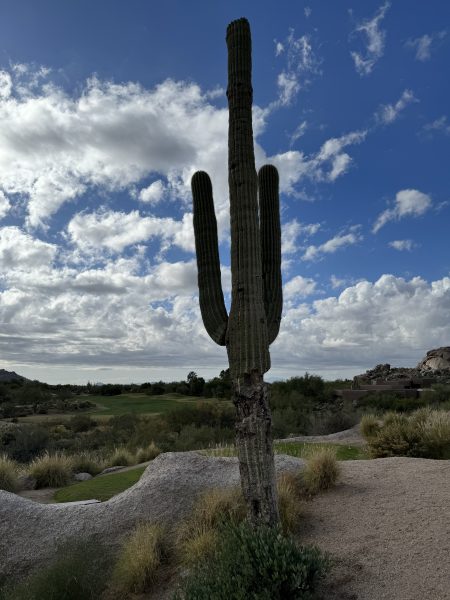
Both courses do have a few splatters of water hazards here and there. Most folks I spoke to on the property noted that the South Course has a couple more breathtaking views and elevation changes than its counterpart North, but the North Course provides a wider array of shot-making options for the more serious golfer. I thought both courses were stunning to the eye, but it wouldn’t shock me if, had I played South, I found it a bit easier and more resort-style friendly.
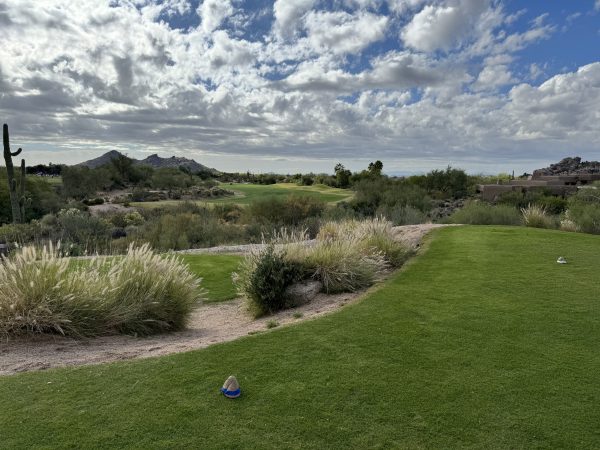


Non-member tee times can be booked online or through the pro shop but if you are staying at the lodge, you’re more than likely going to get a better hotel rate to play. In November, which is almost peak season, mid-week greens fees range from around $100-$200 with dynamic pricing throughout the day. Both courses are incredibly walkable and a caddie or pushcart can be available upon request.
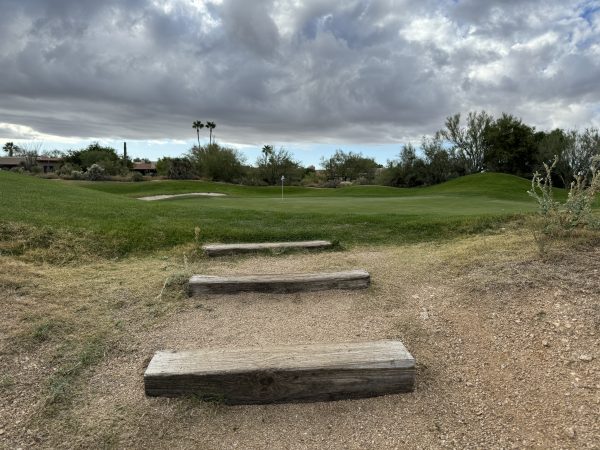

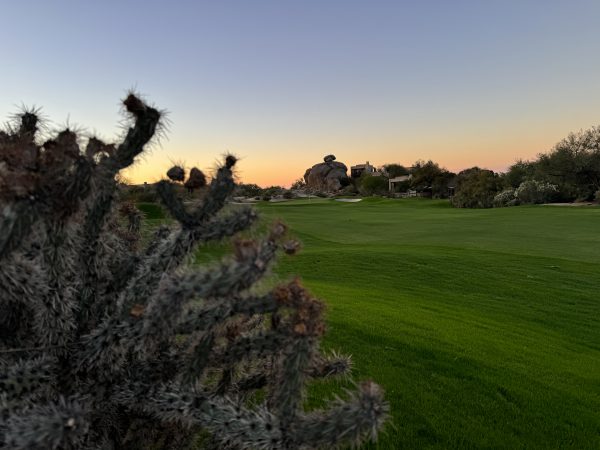

After my round, I took my son on a hike up the mountain above the lodge for some pretty stunning views of both courses. My wife escaped to the spa for a 90-minute hot stone massage, which was my way of saying thank you for another golf trip for the family. The least I could do. She said it was incredible and unlike any other massage she has ever had in her life. They even put hot stones between her toes, which I suppose feels good.
We wrapped up our stay at Boulders with a fantastic dinner at Palo Verde, located at the resort headquarters. We were able to sit outside under the stars with the help of a few closely placed heaters. With the golf, the restaurants, and the natural activities available, Boulders proved to be a wonderful spot to relax and get some swings in. If your partner is a fan of spa days and calm settings, this is the golf resort in Scottsdale to stay at. The food, drinks, and lodging are all upscale. I would say it is a perfect couples’ getaway resort. We didn’t see any other kids so there may be better places to stay if you’re bringing the little ones along, though. With kids, I’d stay closer to town (see below) and head up to Boulders for a round of golf only.
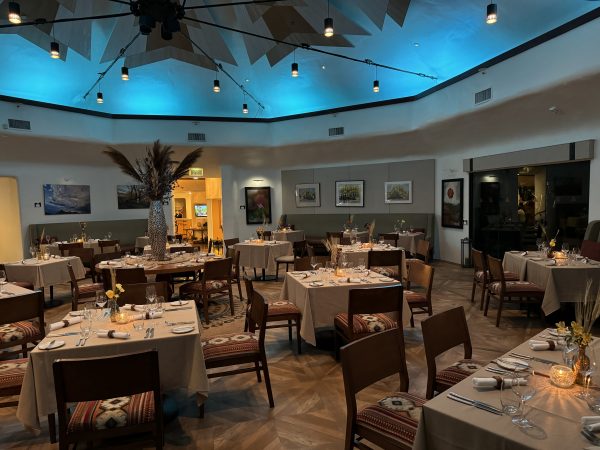
Palo Verde dining room at Boulders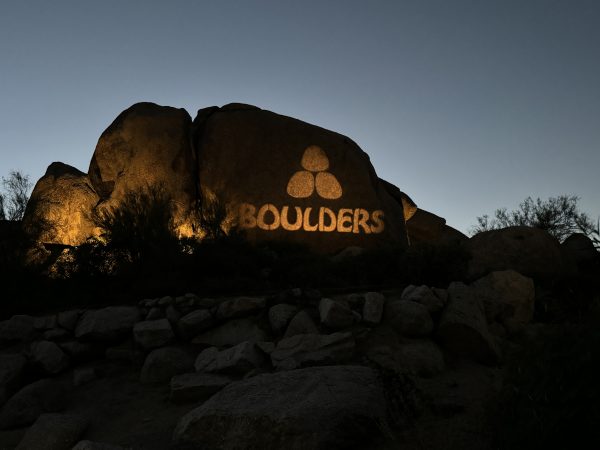
TROON NORTH
The next morning, I took an Uber just a few minutes away to the Troon North campus for a round at the Pinnacle Course. Troon North is home to two tracks, both designed by Tom Weiskopf and both immaculately maintained year round. The Pinnacle course is more links-style than its sister, the Monument Course, which is widely considered the signature course between the two.
The clubhouse is first class, with a well-stocked 2,200 square foot pro shop, and a legitimate locker room for public use. And the logo is fantastic.
Troon North offers a membership plan as well as public play, and daily fees are dynamicly priced.
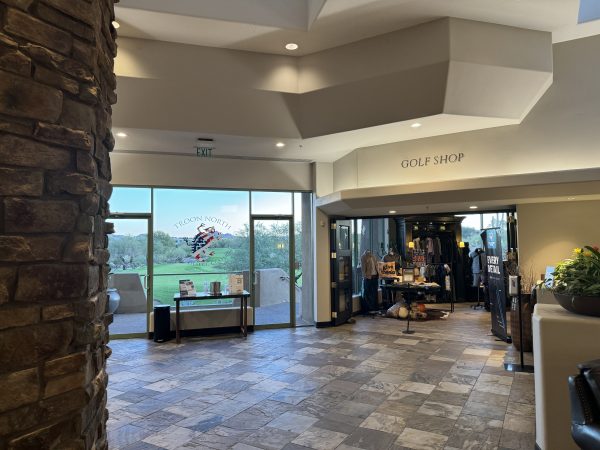
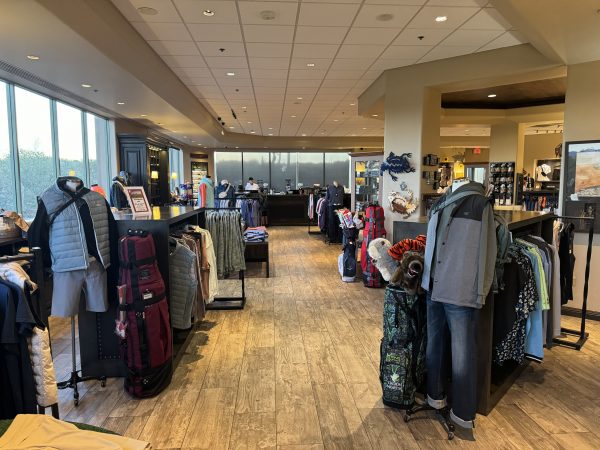

Pinnacle course plays over 7,000 yards from the back tees but provides seven different tee boxes allowing you to play the course as short as 4831 yards. Though more links style than Monument, the course still provides a very Sonoran desert feel and carries over thorny brush on nearly every hole.
Both courses were ranked in the “Top 10” best courses you can play in Arizona by Golfweek.
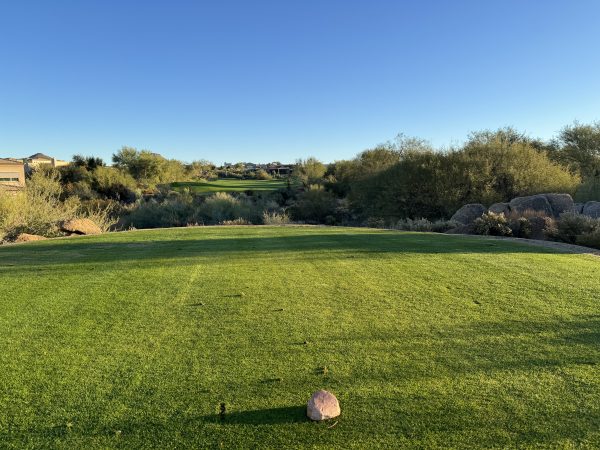
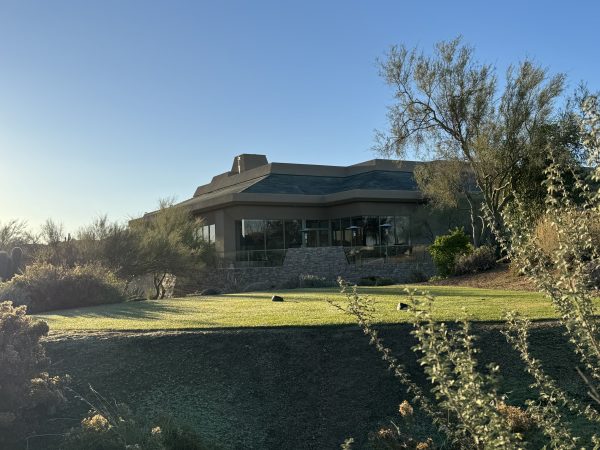

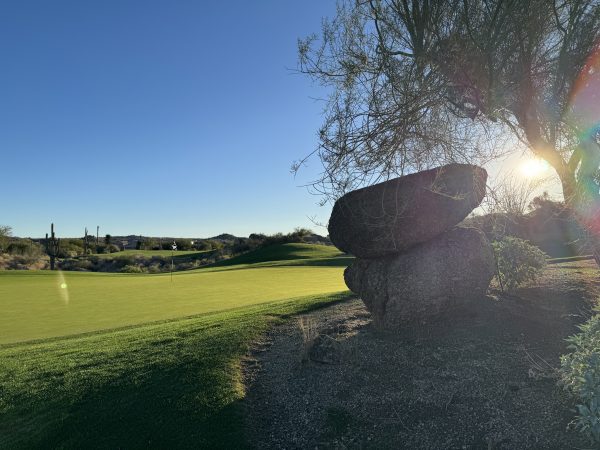
I thoroughly enjoyed my round at Troon North. The facility is about 35 minutes north of the Phoenix airport so it’s a bit closer to downtown Scottsdale than Boulders. It is also closely connected to the Four Seasons should you be looking to stay nearby.
The course felt pristine and special. You can tell the place pays attention to detail and takes great pride in the condition of the courses. The layout has some elevation changes so it may not be the easiest to walk. The routing never really brings you back to the clubhouse until the 18th hole, either, but there is a comfort station out there and beverage carts making the rounds.
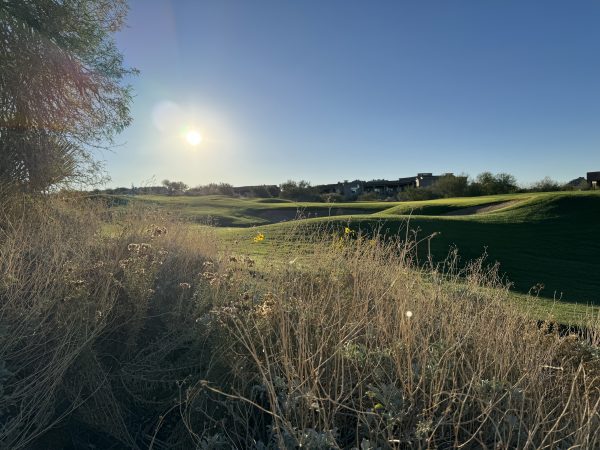
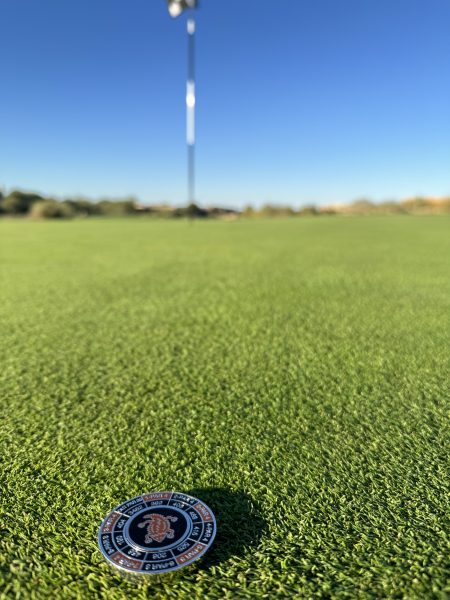

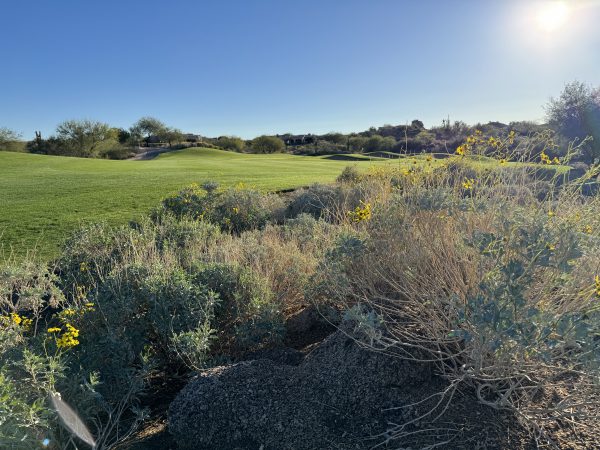
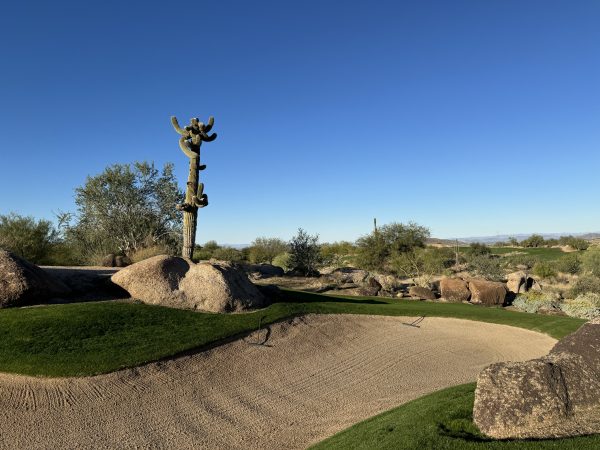
The bunkering is fair and not very deep, but they are strategically placed right where you don’t want them to be. The par 71 has only one par 5 on the front nine but boasts a 609-yarder on the back that plays every bit as long as it reads. The par threes are scenic but lengthy as well, generally playing around 200 yards from the backs except for the short 140-yard 16th.



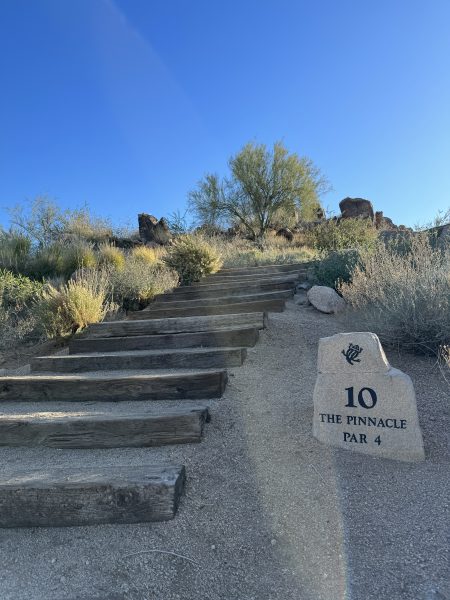
The fairways are bermuda grass and the greens are bent. Overseeding is done in the fall but the schedule is posted online to help avoid any unpleasant rounds. There are valley quail all over the course that walk in front of you on fairways and tee boxes like schools of fish.
The course is just so scenic and first-class. The mountains are in view the entire time and the course provides a wide array of options and shotmaking opportunities. I played early and alone and I genuinely enjoyed my time on the course. It was my favorite round of the trip.
The 18th green is huge and it blends into the practice green near the clubhouse, snaking around a giant rock to protect the practice green from shots gone long. It is a very unique site from both the clubhouse and the 18th hole but adds some character to the facility.

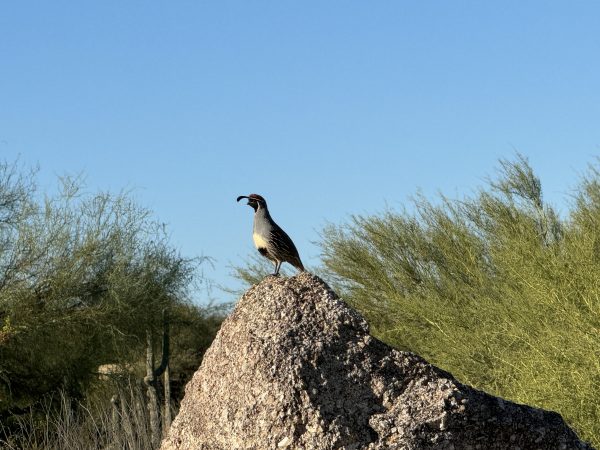


CAMELBACK INN RESORT AND GOLF
The JW Marriott Camelback Inn is an incredible hotel. I am not really sure how else to describe it. Being there feels the way an in-city Scottsdale hotel is supposed to feel. You’re surrounded by Camelback mountain on one side and Mummy Mountain on the other. The adobe buildings feel like they have been there forever and yet are still perfectly maintained. There are sitting areas near fireplaces around every turn and the landscaping is quintessentially desert floral.
We heard from more than one person that the Camelback Inn is Mr. Marriott’s favorite hotel within his entire company and he spends one month there every year. That is saying something!
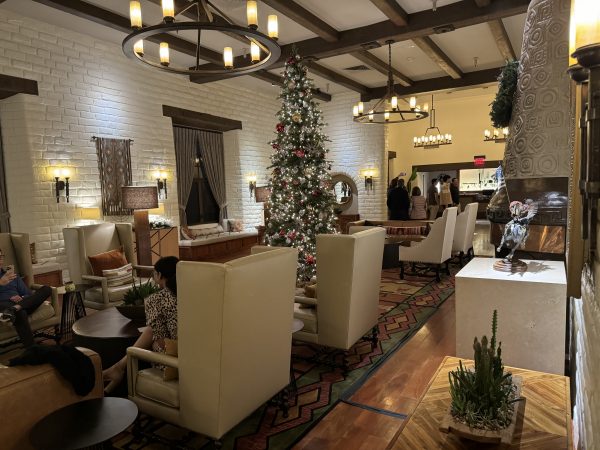
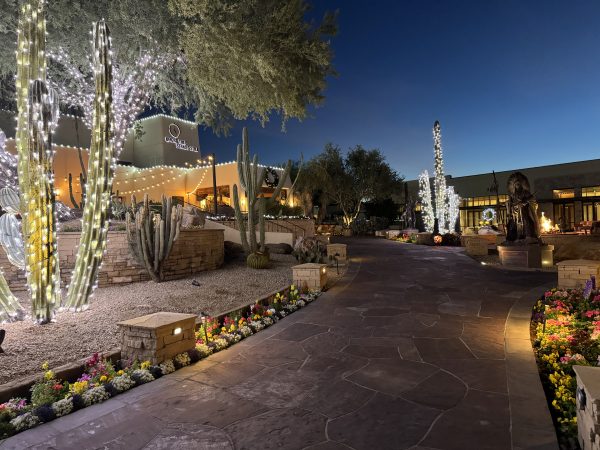
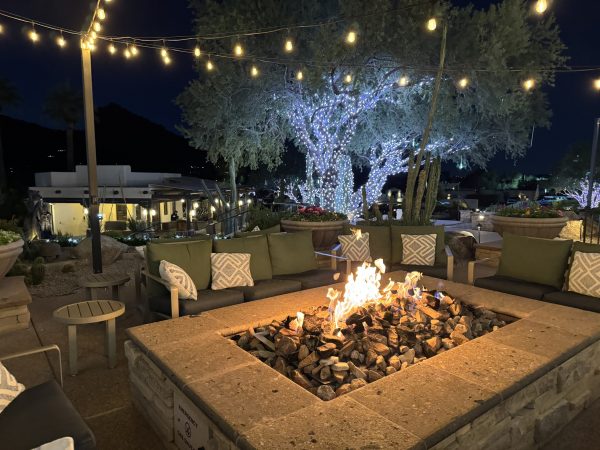
Our room was standard size but wonderfully located just a hundred yards or so away from the main lodge and restaurants. Between us was a green space with lawn activities for guests of all ages. There is a playground and putting green on site and several pools (some heated) for swimming year-round. And the views are just spectacular. To be only minutes away from Old Town while still being able to hike up multiple mountains of your choosing is one of the most special things about Scottsdale.
We ate breakfast, lunch, and dinner at Rita’s Cantina and Bar…simply because the menus change for each meal and the outside patio seating is so incredible. Hoppin’ Jacks at the pool is another dining option but the Lincoln Steakhouse and Bar is the upscale dinner spot…and the gem of the dining options.
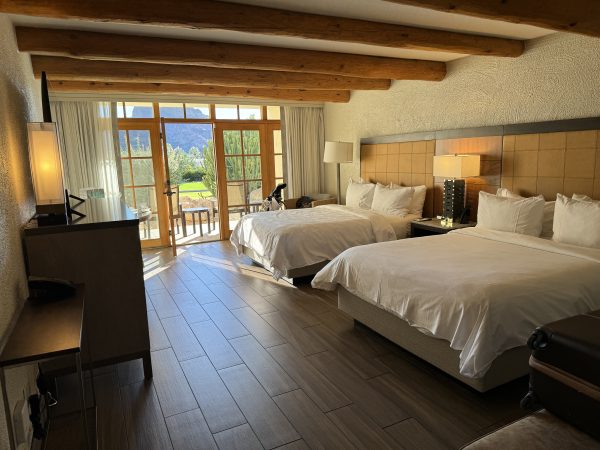
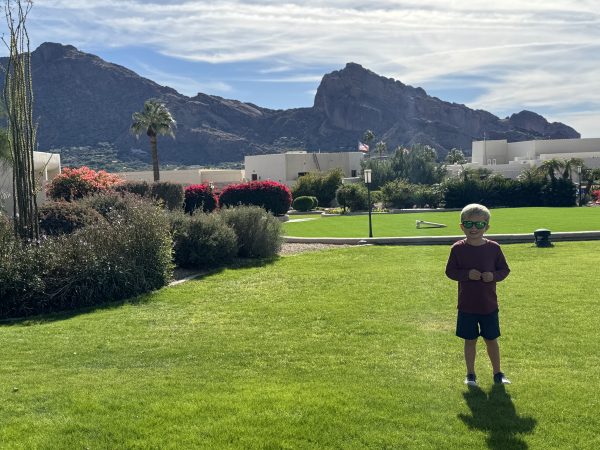
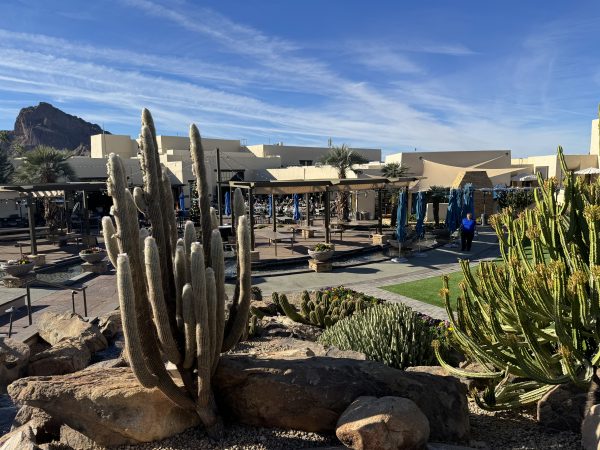
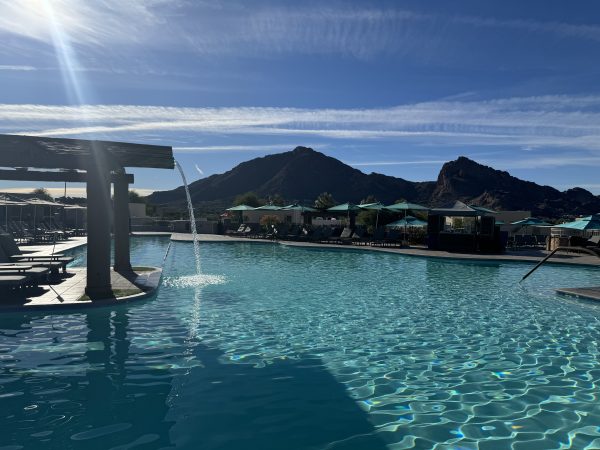
The Camelback Golf Courses, Ambiente, and Padre, are not on site, but the resort provides you with a free shuttle service for your tee time. The ride is only about five minutes and they start at 7:00 am.
The clubhouse is large with a spacious golf shop. The Camelback logo, while a bit cartoony, is pretty fantastic in a 1960s Bob Hope Classic kind of way.

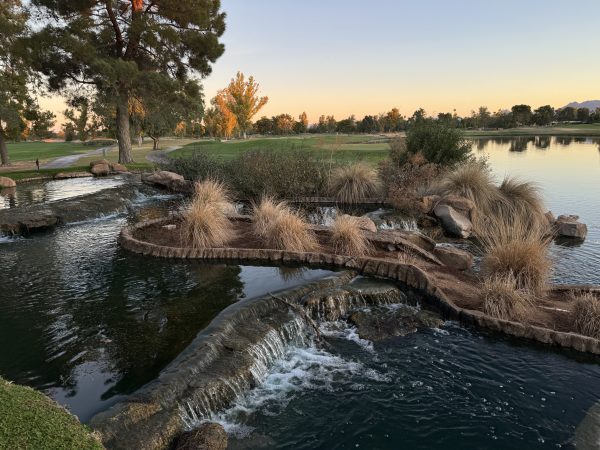

I played the Ambiente course, which I was told has a bit more character than the Padre. Ambiente goes straight out for 3 miles, following along a gulch on your right the whole way, and then turns around and comes right back to the clubhouse for the back nine. If you are walking, make sure you’re in it for an entire 18-hole round. There’s no stopping after nine if you are on foot and three miles away from the clubhouse.

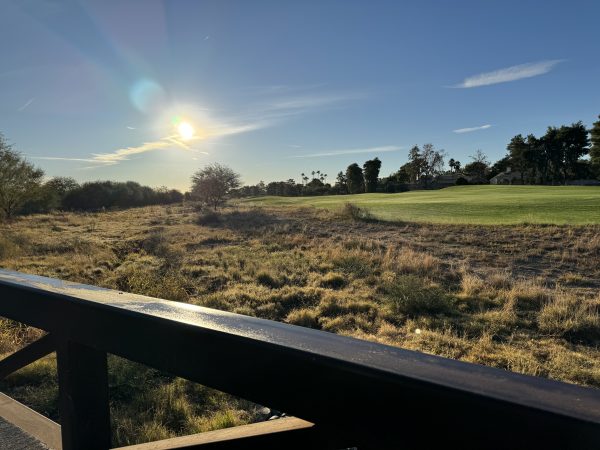

These courses are more parkland than desert. That’s especially true of the Padre course. But even Ambiente, which translates to ‘environment,’ is not very ‘deserty’ in comparison to Troon North or Boulders. There are a lot more grassy rough areas off the fairway and very little cactus. The gulch, which is seen on nearly every hole, feels more native and marshy than anything I saw in my previous rounds. It’s a gorgeous course, but not what you imagine when you think of Scottsdale golf.
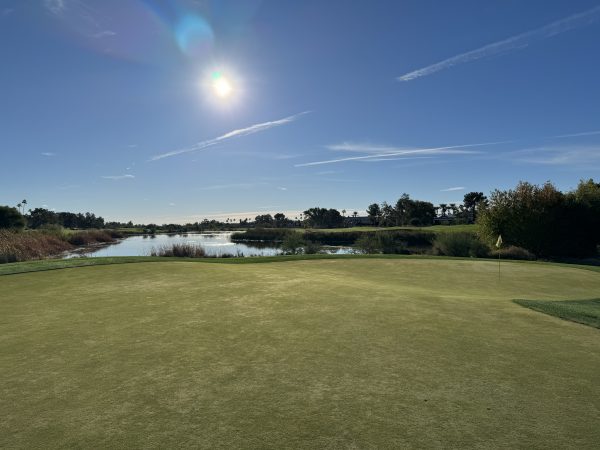


The course itself, with its unique straight-out, straight-back routing, lengthens out to 7,225 yards from the tips and 5,538 from the forward tees. The par 72 Jason Straka design is not an easy course. Many of the holes require precision tee shots and a bit of course knowledge doesn’t hurt as the driver is not always proper. The par threes play long, with the shortest being 185 from the back tees. The 8th hole can stretch back to 241 yards and then number 15 goes even longer to 245. Of course, you don’t have to hit back there unless you’re a glutton for punishment.
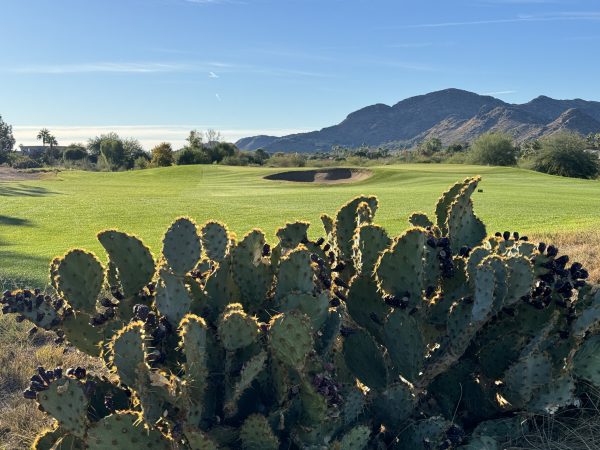
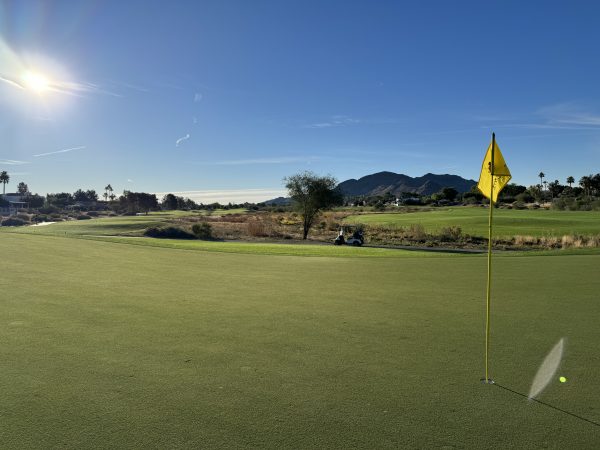

The bunkering is deep in certain areas, which you realize as early as the greenside on the first hole. Playing this course after the other desert layouts I have played made me wonder if this is the true ‘nature’ of the area and perhaps the other desert courses are a bit more…manufactured. Ambiente feels native. I think I enjoy the other desert style aesthetics of the other courses more, but from a pure golf perspective, Ambiente at Camelback is a real deal course.


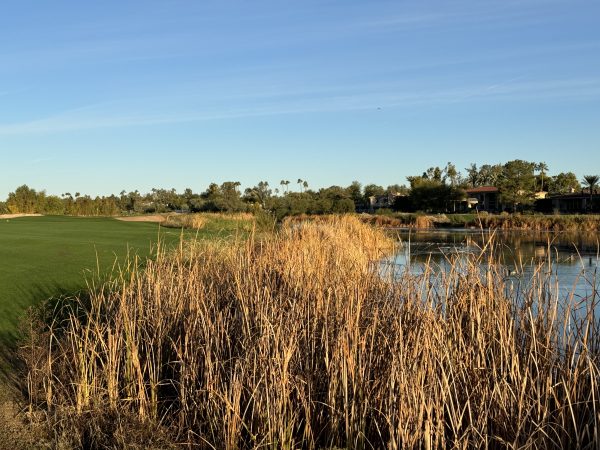
SCOTTSDALE LIFE
The beauty of Scottsdale as a golf destination is that no matter which courses or resorts you decide to enjoy, you are still always within 30 minutes of a fantastic city center, with great shops and world-class restaurants. Old Town is only one little pocket of what Scottsdale has to offer, but because of the neat stores for our kiddo and walkability, we spent most of our time away from the resort here.
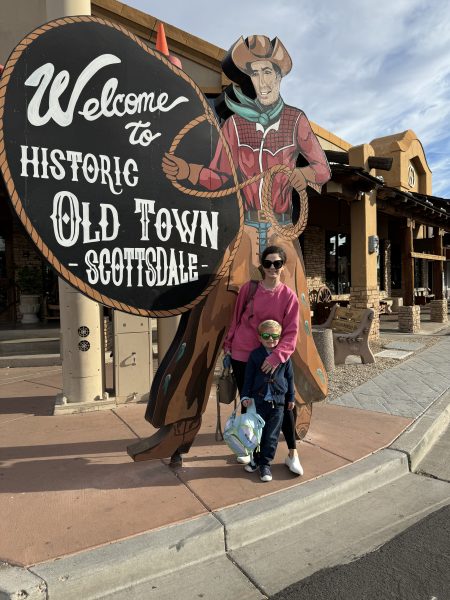
Like any great city, anyone who has visited will be able to give you a list of their favorite places to play, shop, and eat. For us, we loved going to Popstroke, the Tiger Woods-designed miniature golf course, as well as Mavrix for bowling and laser tag. When you’ve got a five-year-old, you do what makes him happy too. We also went to Isabella’s Kitchen for lunch on one of our days, which overlooks the McDowell Mountains and Grayhawk Golf Course. The food is always delicious and it’s a really fun location for the kiddo to run around while mom and dad can have a margarita.


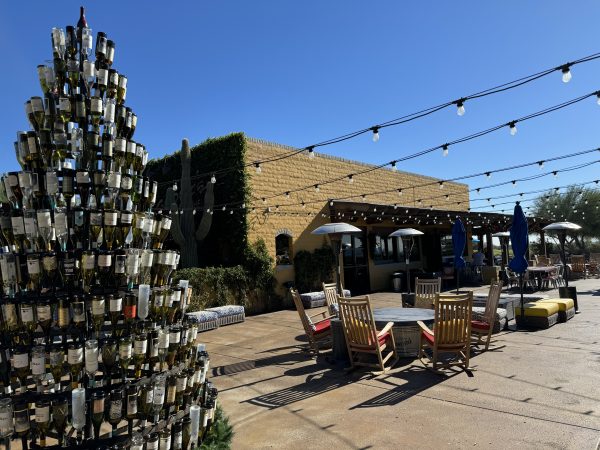
We went to The Montauk in Old Town for our only dinner outside of the resort and it did not disappoint. It’s a really neat atmosphere and the menu was a mix between The Hamptons and Southwest tastings. They had live music and friendly staff. It doesn’t get much better.
And if you find yourself out and about for breakfast, you need to stop in at the Daily Dose for some Cinamon Roll Pancakes or Breakfast Nachos. We made a quick stop here on our way to the airport and didn’t need to eat for the rest of the day!
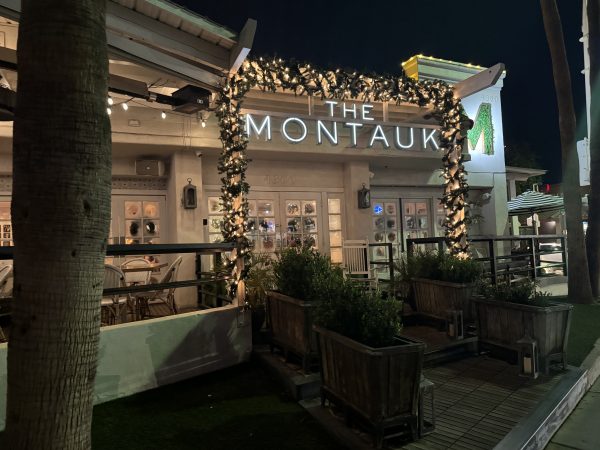
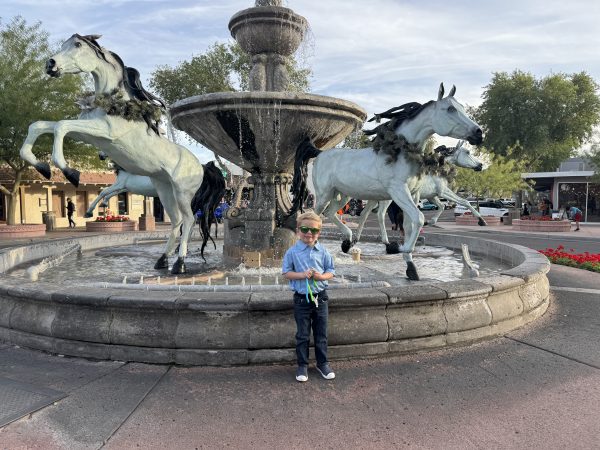
Having been traveling for golf for some time now, people always ask my opinion on my favorite courses or favorite city to go to for a golf trip. My answer always starts with “It depends on who you are going with…”
If you are heading out for a golf trip with your family, I don’t think you can pick a better city than Scottsdale. The travel itself (airport, rental car, etc..) is always a breeze. The resort options (and spas) are plentiful and offer a variety of different setups for couples or kid-friendly atmospheres. And there are hundreds of golf courses to choose from. All the while, Scottsdale has one of the best restaurant and entertainment scenes in the United States.
I’m sure I will keep getting the question. But if you are thinking of a golf trip with the family, the answer is Scottsdale.
If you want help planning your next golf experience or just have any questions about some of mine, reach out to me on Twitter or Instagram and shoot me a message. And feel free to check out my other golf experience articles. I look forward to hearing from you!
- LIKE145
- LEGIT50
- WOW5
- LOL2
- IDHT0
- FLOP3
- OB1
- SHANK5
Courses
PGA Frisco: A GolfWRX first look with Gil Hanse and Beau Welling
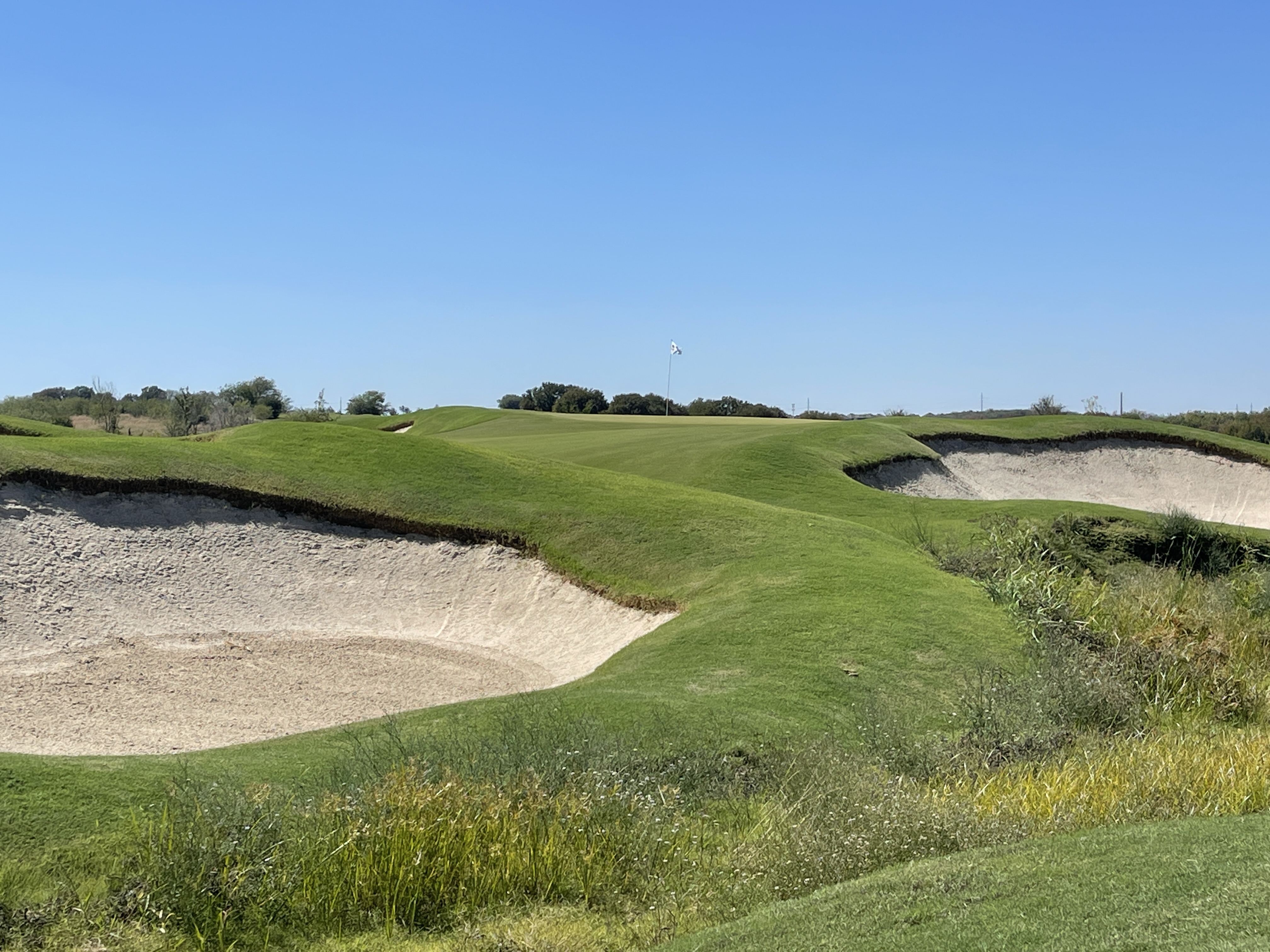
PGA Frisco in Frisco, Texas, is the new home of PGA of America. The two courses on-site, Fields Ranch East and West, are original designs by Gil Hanse and Beau Welling, respectfully, but they aren’t set to open for public play until the Spring of 2023. However, GolfWRX was given an opportunity to take an early look, play both courses, tour the facilities, and meet with the course architects ahead of the much-anticipated unveiling for the golf world.
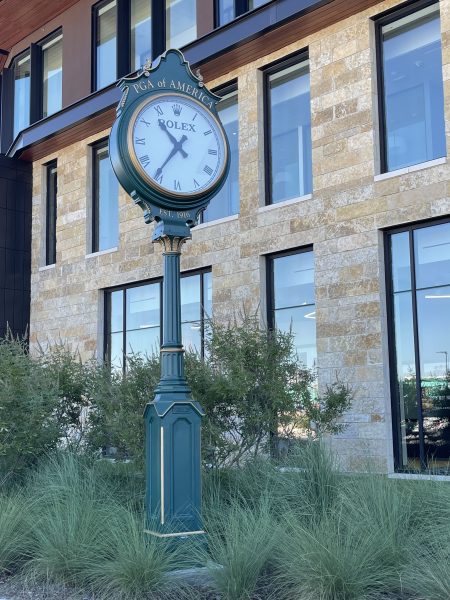
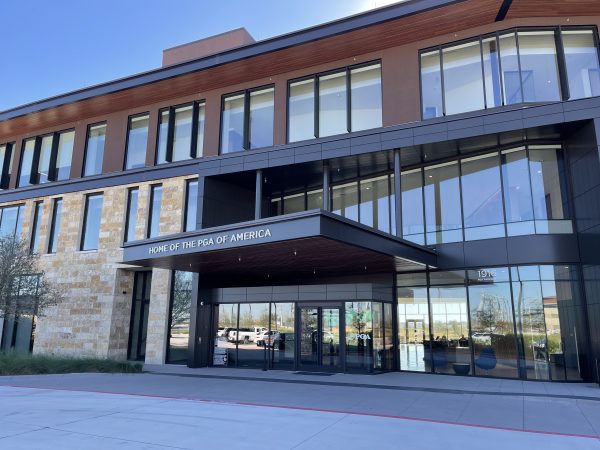
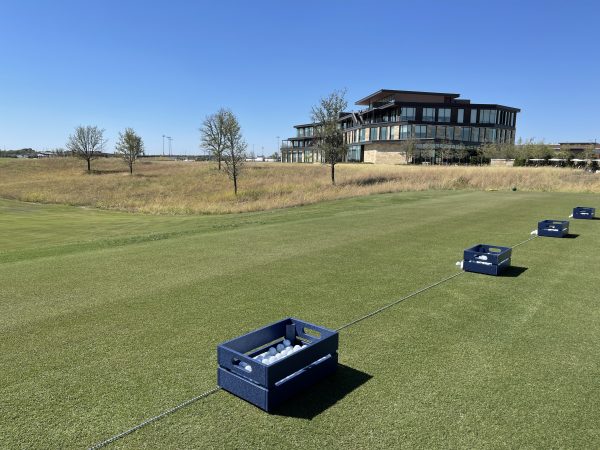
The PGA Frisco location, which also shares the property with a brand new Omni Resort, a short course called The Swing, and a 75,000 square-foot putting course named The Dance Floor, appears to be joining the conversation as one of the country’s best buddy trip and family trip golf destinations.
The Omni resort is going to be complete with 500 luxury guest rooms and suites, 10 private ranch house residences, 13 different dining options, four pools, including an adult-only rooftop infinity pool, and a full-service salon and spa. They are going big with this place. All the facilities are currently under construction, but the plan is for them to be open by the Spring of 2023 as well.
The Swing is a ten-hole, lighted short course that provides a nice nightlife compliment to the larger courses, Fields Ranch East and West. Collaboratively designed by Hanse and Welling, The Swing is just steps from the Omni hotel, The Dance Floor putting course, both championship courses, and a sports bar with bays for hitting into the driving range. The golf isn’t going to stop when the sun goes down. And no shuttle is needed at PGA Frisco.
“With The Swing, we started off by saying you do five holes and we will do five holes but it turned into a true collaboration,” Hanse said when discussing designing the short course alongside Welling. “When you start to think about designing a golf course with the shot values and how is it going to be perceived, what are the players going to think…then that creeps into your design. But when you are designing something just for unbridled joy, you don’t think about those things and that just makes something super fun.”
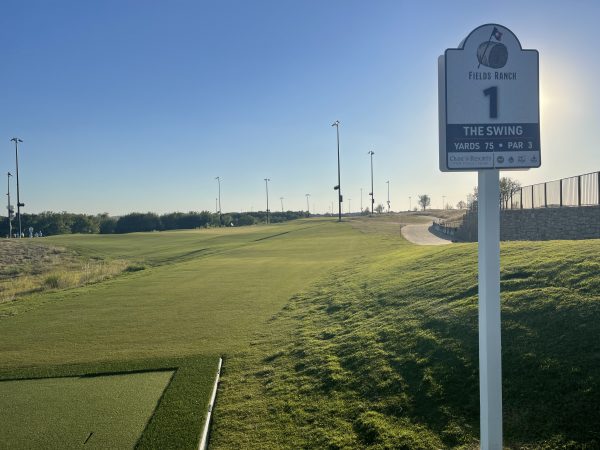
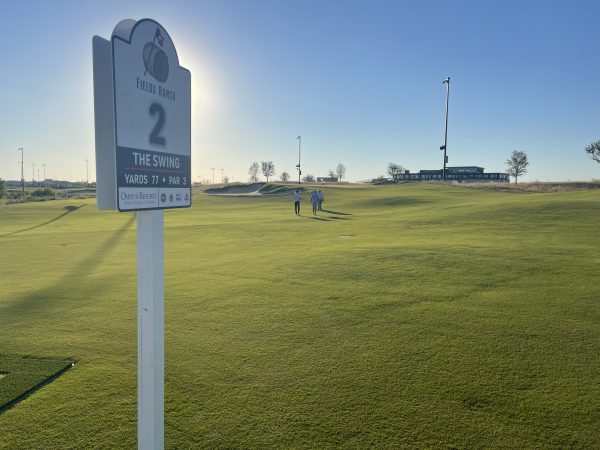
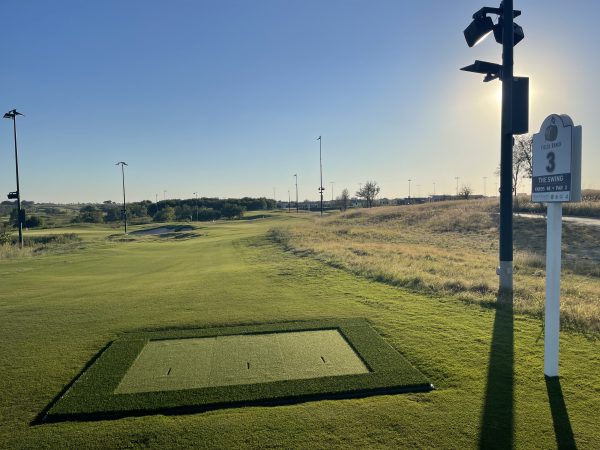
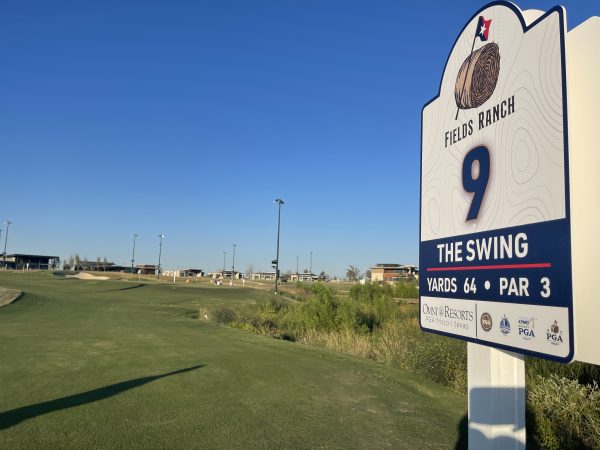

As good as the atmosphere and vibes are going to be, people are going to come for the golf. And major championships are coming too.
Fields Ranch East is already set to host the KitchenAid Senior PGA Championship in 2023, as well as 26 additional championships through 2034, including two PGA Championship events, and the KPMG Women’s PGA Championship.
Fields Ranch West Architect Beau Welling, who is probably best known for his work alongside Tiger Woods on the TGR Design projects, was excited about this property and opportunity right from the very beginning. “The original vision of this idea of multiple golf courses and a short course and practice course and all this fun stuff immediately resonated with me,” Welling said. “I remember thinking that this could be the coolest thing ever. It’s the PGA brand around this super accessible thing where people could not only visit to learn the game but also be the place where major championships are to contend.”
The East Course

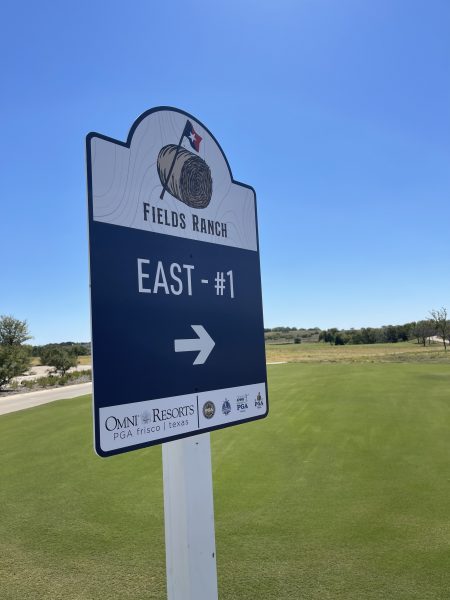
The East course is the Gil Hanse design that is set to host all these majors. The course itself could either play incredibly long or as short as you’d like it, with huge flowing tee boxes being a feature that stands out immediately. Big fairways also immediately reveal themselves as the scale of this course is big. Very big.
“You have to think about how you are going to design for a major championship but also make it approachable and playable,” Hanse said. “We worked really hard to create a playing ground where you can accomplish both. The level of precision required to go out and play the golf course should be pretty low. Wide fairways, hit your ball, find your ball, and hit it again. But the level of precision required to score should be off the charts if we are trying to challenge the best players in the world. There are opportunities to tuck pins and lengthen the East course to 7,800 yards. We feel like we have the setup for a major championship course in place.”
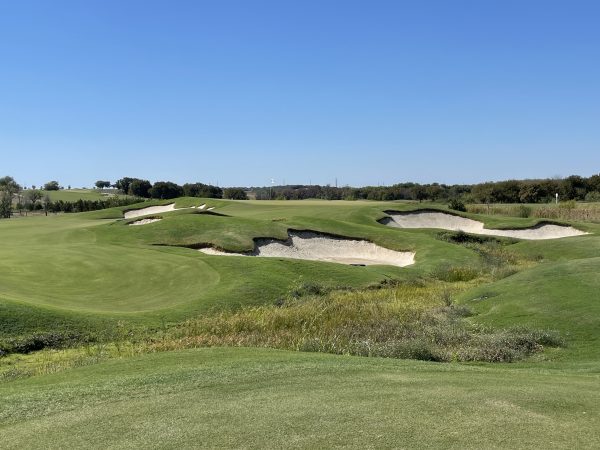
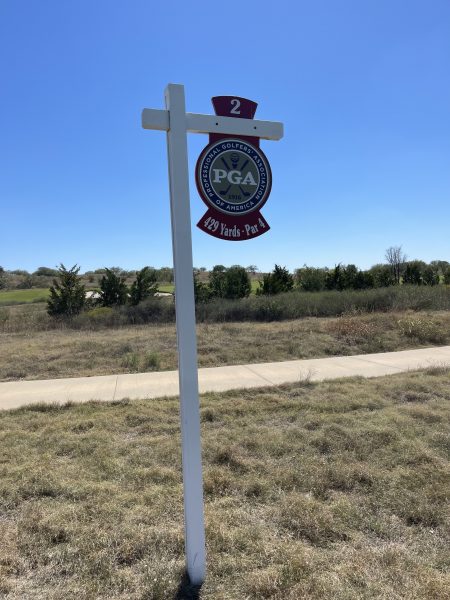


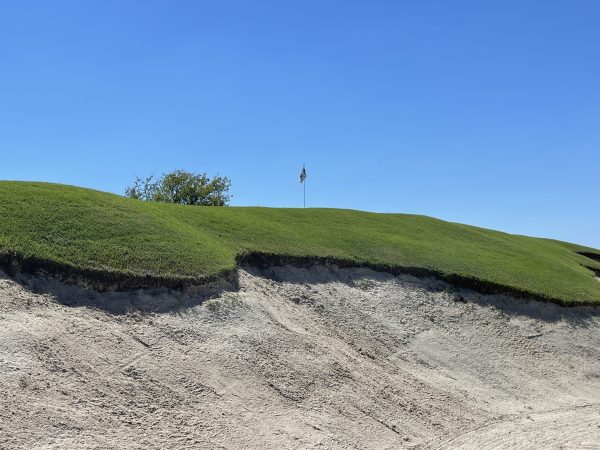
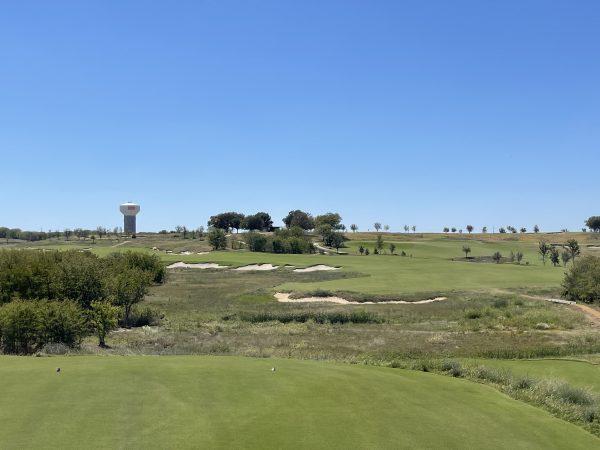
After working on the renovation at Southern Hills, Hanse drew from his experience on the Perry Maxwell design to utilize the site’s meandering Pather Creek and natural dry outs throughout the par 72 track. The course features smallish greens to contrast with the large fairways, making it a second-shot course to put a premium on accurate approaches. The fairways and rough use the same grass type to allow for flexible widening and narrowing of hole corridors to adjust for championship play.



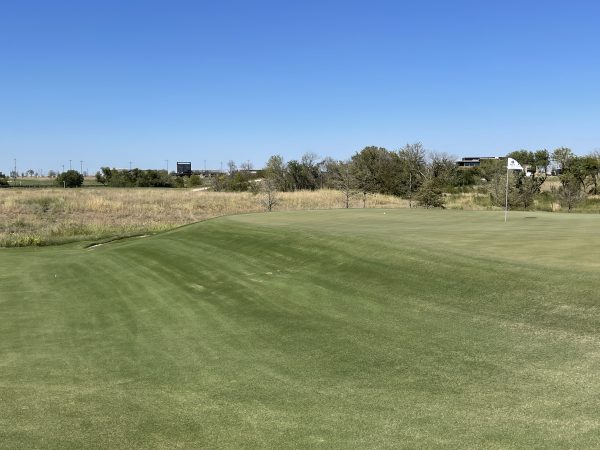

The course maintains a prairie-like feel throughout the routing, but the back nine really shines with Texas character. The creek comes into play on many of the closing holes, including a gorgeously long par three thirteenth hole, and an 18th-hole par five that will hopefully provide some incredible major finishes.
“When the stage is set, we would rather see positive outcomes to determine champions as opposed to negative ones,” Hanse said. “We really enjoy watching golfers make birdies and eagles to win as opposed to some guy making double bogey and the guy who made a bogey barely hangs on to win. So we set up our finishing holes with some tough stretch of holes to start the back nine and then the driveable 15. Then 17 is the shortest par three on the golf course. And then 18 is a reachable par five. So they will have to make decisions and then hopefully positive outcomes will determine how it unfolds.”
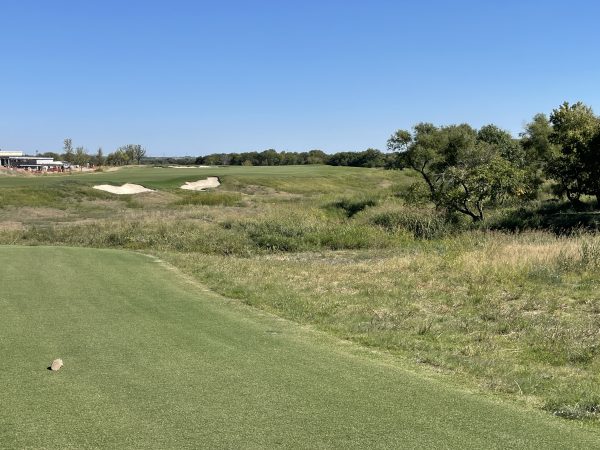
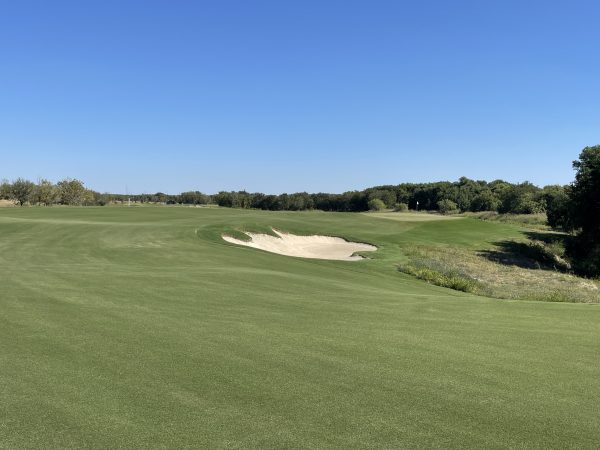
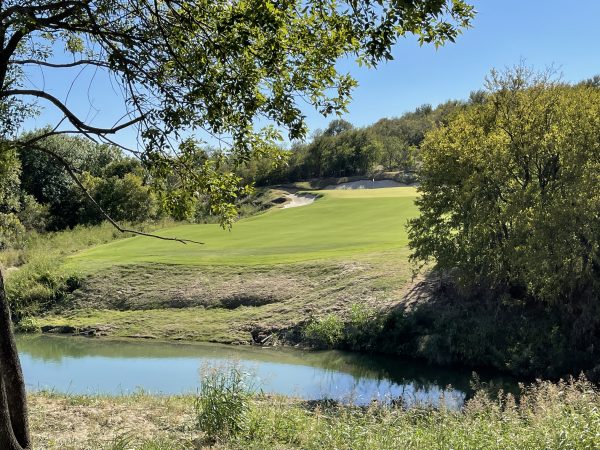
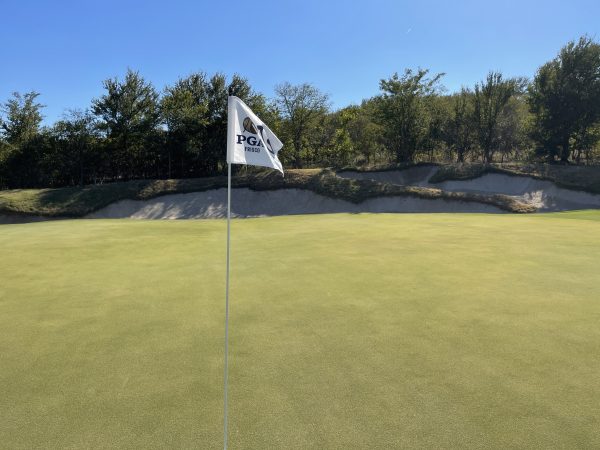
There are also rumors of a Ryder Cup coming to PGA Frisco.
“If we ultimately get the Ryder Cup,” Hanse said, “we thought about most matches not making it to 18. So what can we do with holes 14-16, where generally most matches end. So we wanted to set those up for interesting golf and put it in an amphitheater that is set up really nicely for viewers. So whether it is a PGA championship, LPGA Championship, Senior PGA Championship, or Ryder Cup, we feel like that stretch is going to provide a really interesting way to finish a golf course as opposed to just a long slog to the finish.”
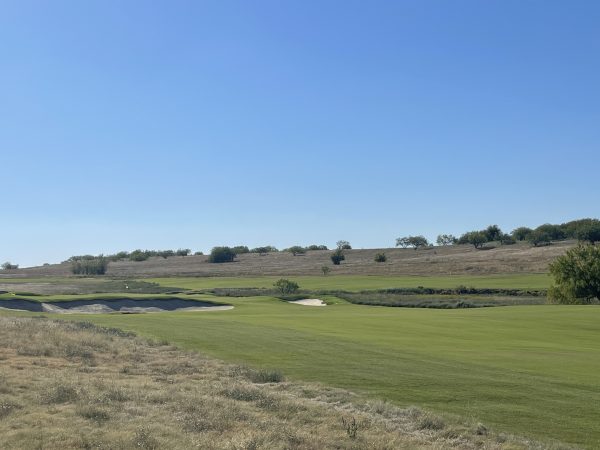


The West Course
The West Course, which is the Welling design, is a playable compliment to the East course, providing another glimpse into big golf in Texas. The expansive fairways average 75 yards in width but the green complexes on Fields Ranch West tend to be much larger than its sister course. The size and scale were both something that Welling wanted to provide as a hat tip to its host state.
“Everything is big in Texas,” Welling said. “There are big weather events and big wind. But there is also incredible passion around the game here in Texas. Frisco is going to get famous because of the major championships on the East golf course, but long term it is going to have such an impact on the game as 28,000 members of the PGA come here to Omni and see golf presented in such a fun and modern way.”
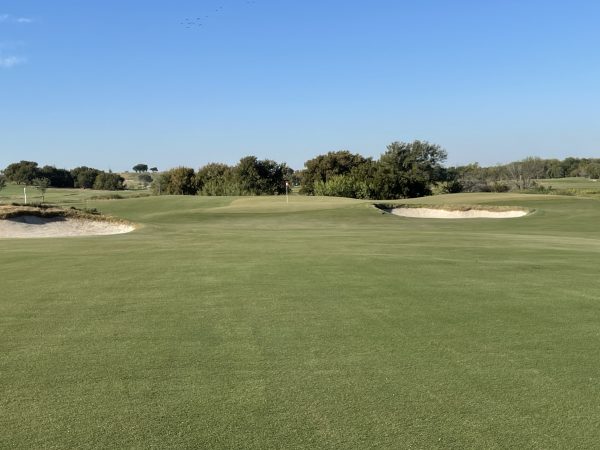
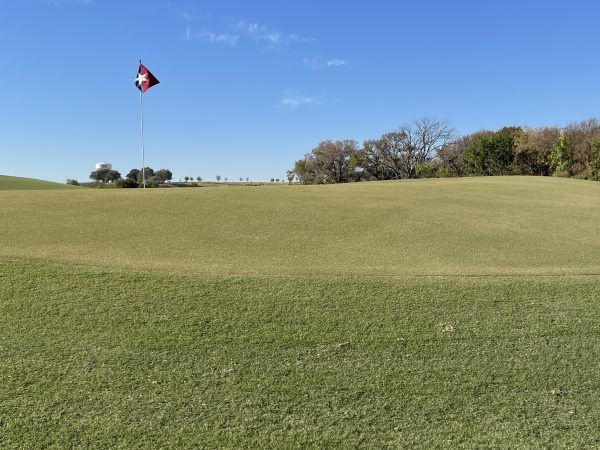

The West Course also plays about 500 yards shorter than the East, tipping out at 7319 yards. The greens are larger but much more complex, with lots of undulation and hills to navigate. While the fairways and greens are big, you need to be in the right spot of each if you want to score. Nearly every green has a false front or false side waiting to shoot an errant approach back down the hillside.
Still, the scale allows for any handicapped golfer to play this course with enjoyment.

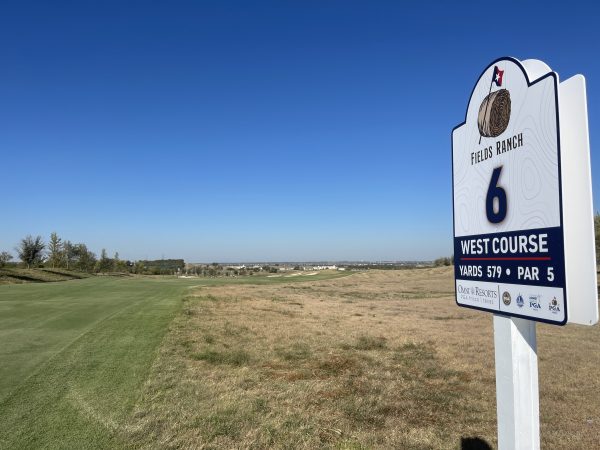
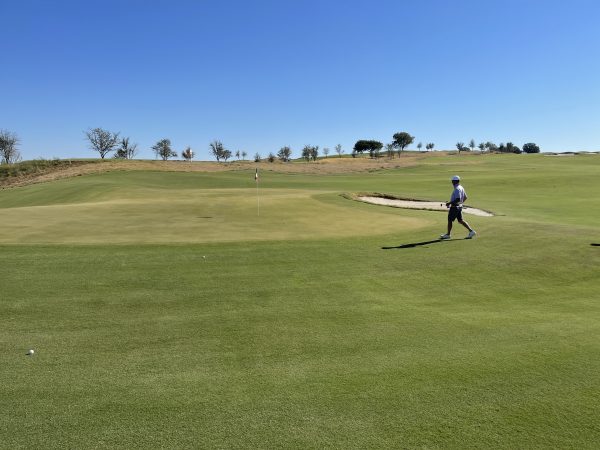
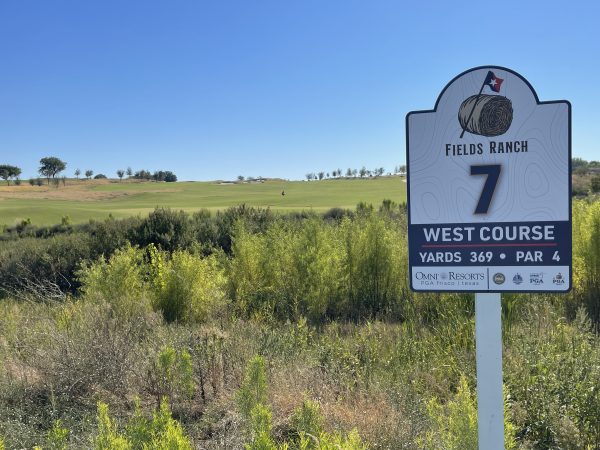
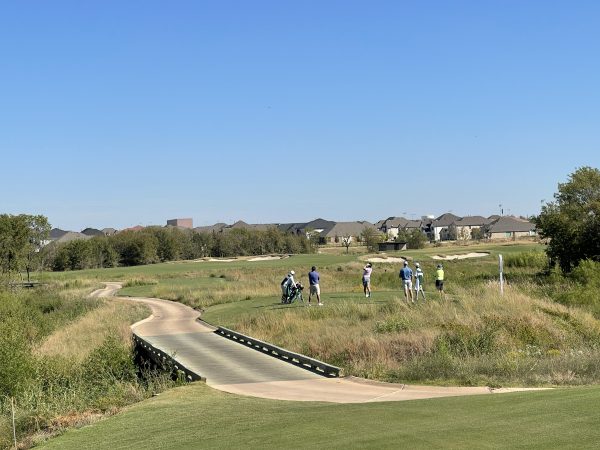
The course also uses the local terrain and elevation changes to both challenge and support each hole. The shorter par 4’s are often uphill, adding length where it isn’t otherwise there. The marshland and Panther Creek are more prevalent on the West course as well, utilizing the hazard to create more necessary carries.
The end result for Fields Ranch West is an approachable compliment to its companion course. There is an obvious feeling of connection between the two courses, but the style of play required for each is unique.
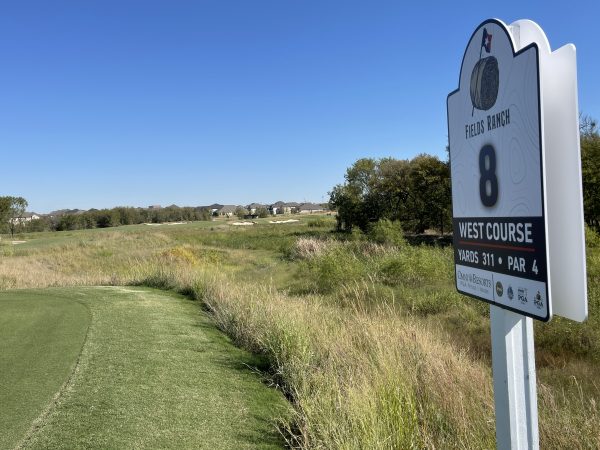
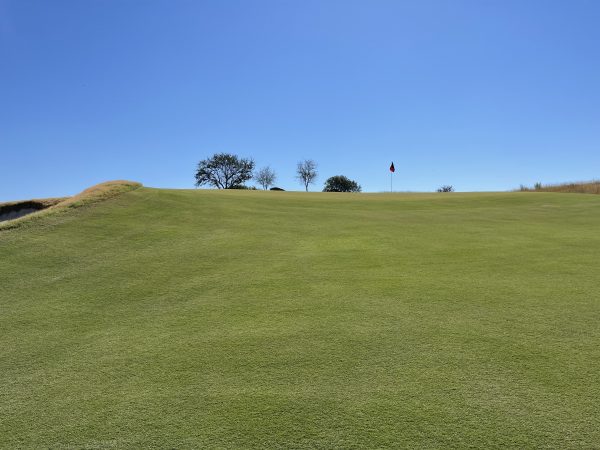
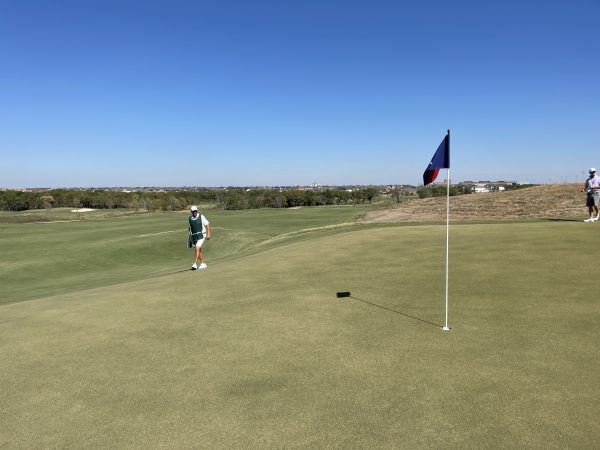


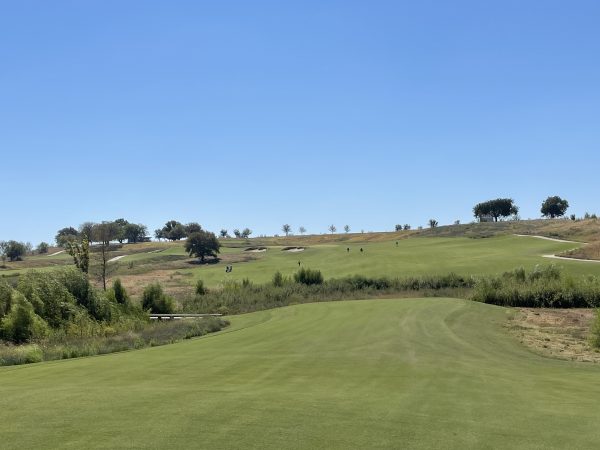
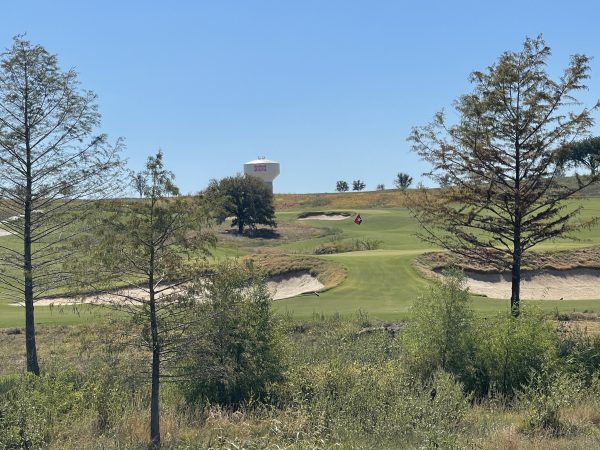
With the partnership and resources of the PGA of America and Omni Hotels and the design leadership of Gil Hanse and Beau Welling, the PGA Frisco campus is primed to rival the best in the world as a premier golf destination.
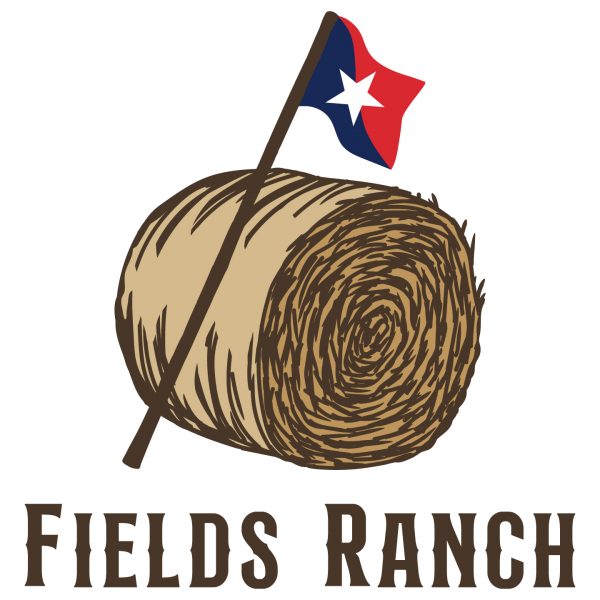
- LIKE60
- LEGIT38
- WOW18
- LOL0
- IDHT2
- FLOP0
- OB0
- SHANK0
Courses
Inside Pebble Beach’s “The Hay” Short Course (designed by Tiger Woods/TGR)
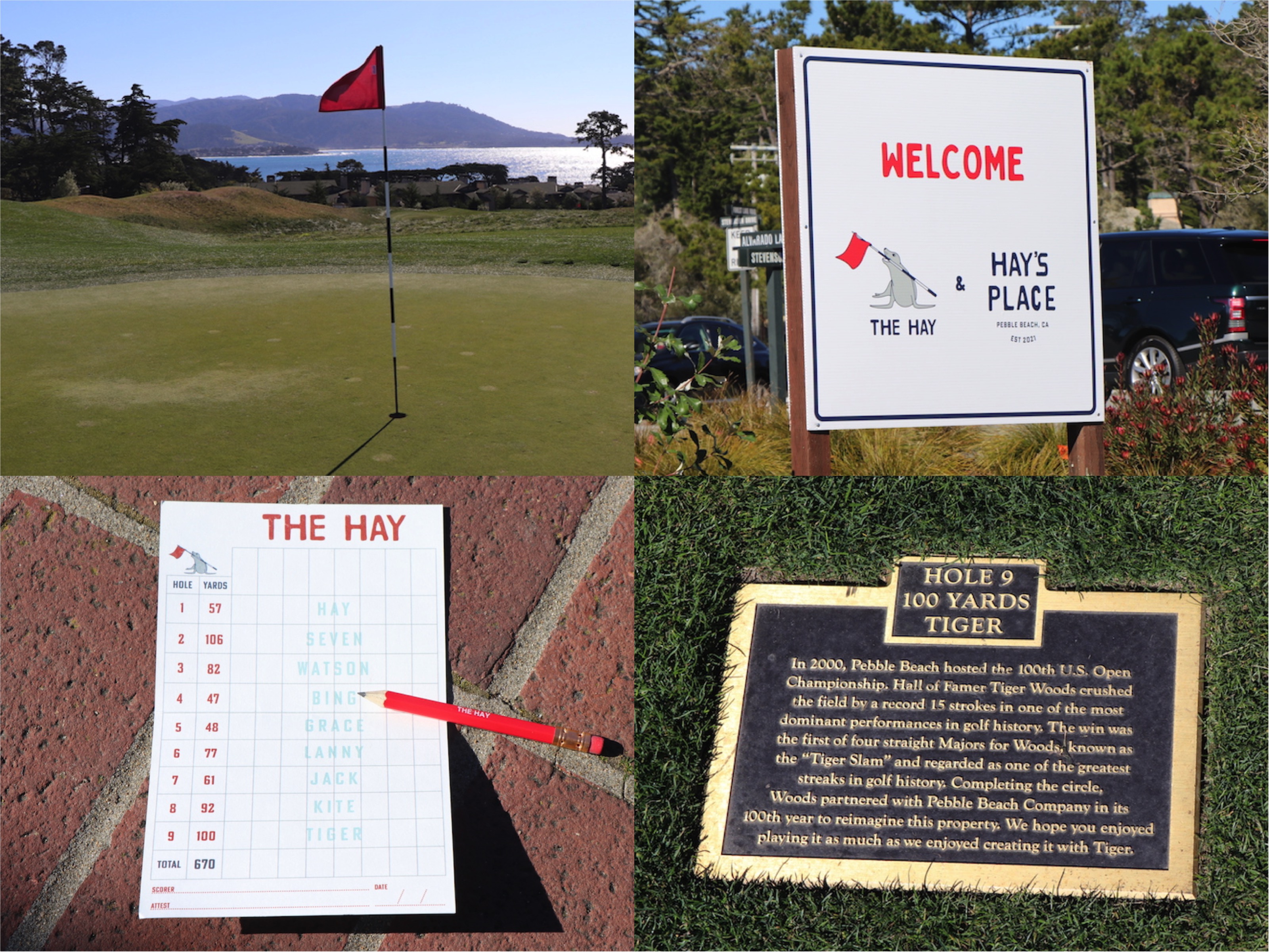
This is my first trip to Pebble Beach since Tiger Woods’ new “The Hay” short course opened up in 2021, so I had to see the new setup for myself. Preferably, I would have actually played it, but the course was closed for maintenance ahead of the 2022 AT&T Pebble Beach Pro-Am festivities.
Luckily, though, I had my camera handy as the fine folks at Pebble Beach’s short course allowed me to walk around and check it out. Below, I’ll take you along my walking tour, but first, some brief backstory and information.
The short course, formerly known as the Peter Hay Golf Course, sits just across the road from Pebble Beach’s driving range, and it’s been a fixture at the resort since 1957. The course was originally named after Peter Hay, the head professional at Pebble Beach and Del Monte. He created the short course to provide a way for junior golfers and families to more easily access the game, regardless of their abilities.
In 2021, Pebble Beach teamed up with Tiger Woods and the TGR Design team to give the course a redesign (without moving any trees or dirt, according to a Pebble Beach representative).
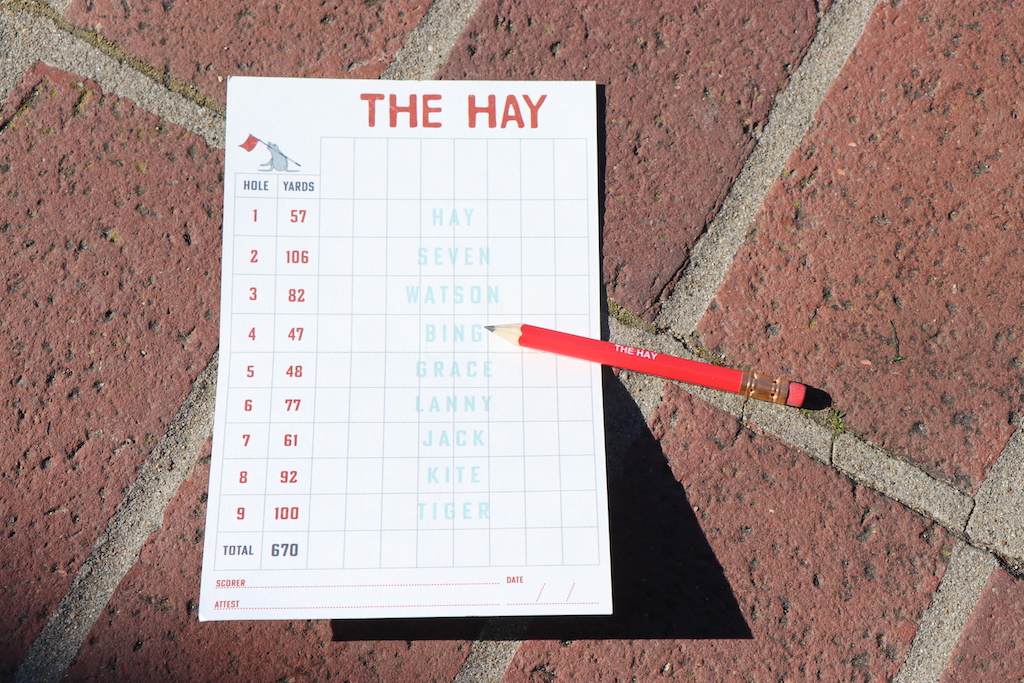
The new 9-hole short course is open to the general public for $65, and juniors under 12 years old play for free. The putting course, which sprawls about 100 yards in length, is open to the public at no cost, as well.
“We know not everyone who comes to Pebble Beach will have a chance to play the U.S. Open course, so we wanted to create the opportunity for all visitors to experience one of its most famous holes,” said Tiger Woods, according to The Hay’s website.
There’s also a restaurant/bar – called “Hay’s Place” – that has views of the entire course, and of Stillwater Cove. It’s not a bad spot to grab a drink before or after the round, and I hear the fish tacos are phenomenal. Just saying.
Enjoy the photos below from Tiger’s new-and-improved Pebble Beach Short Course, called “The Hay.”
The 100-yard putting green course
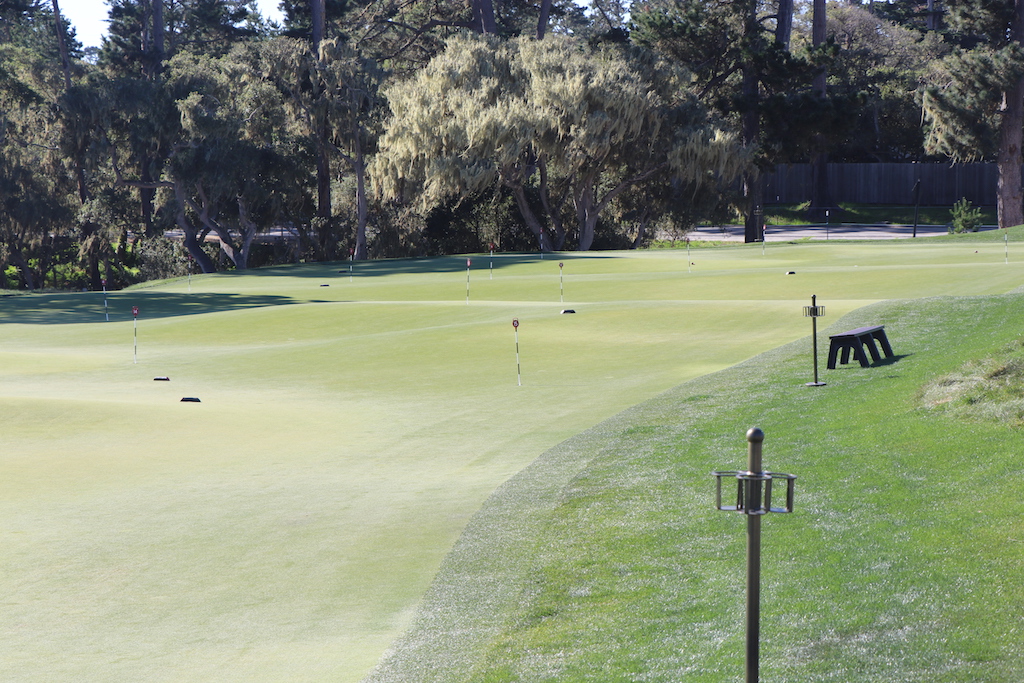
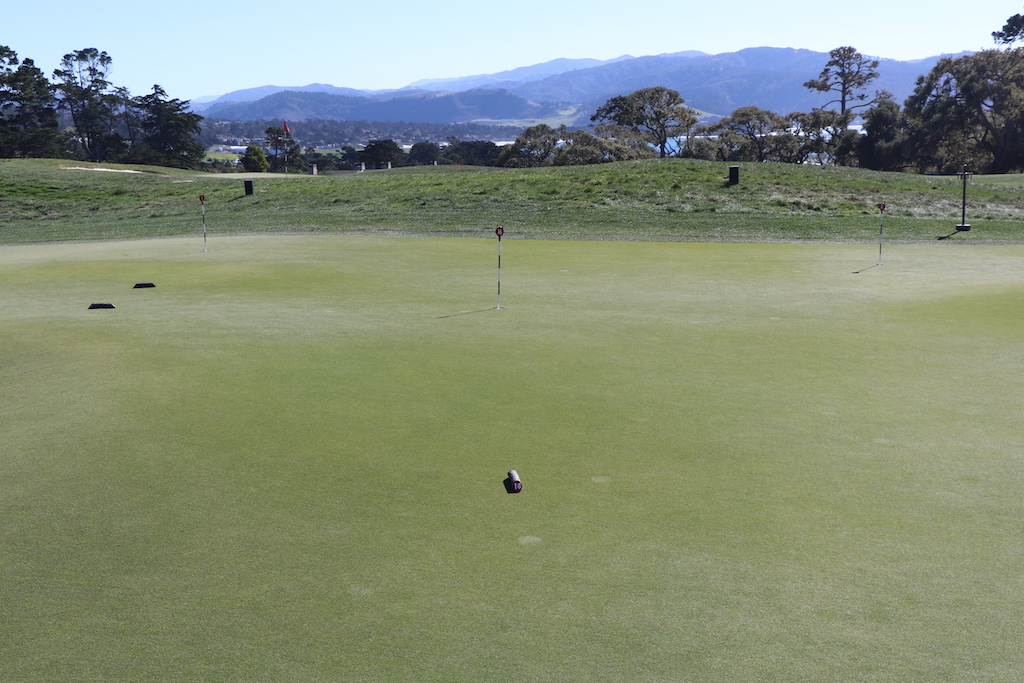
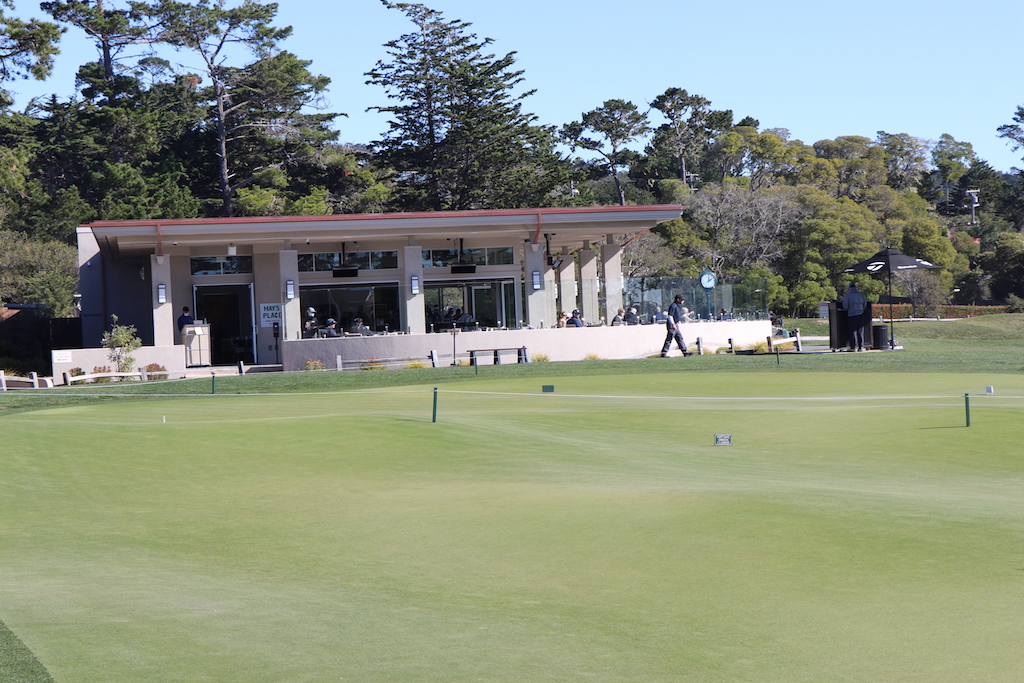
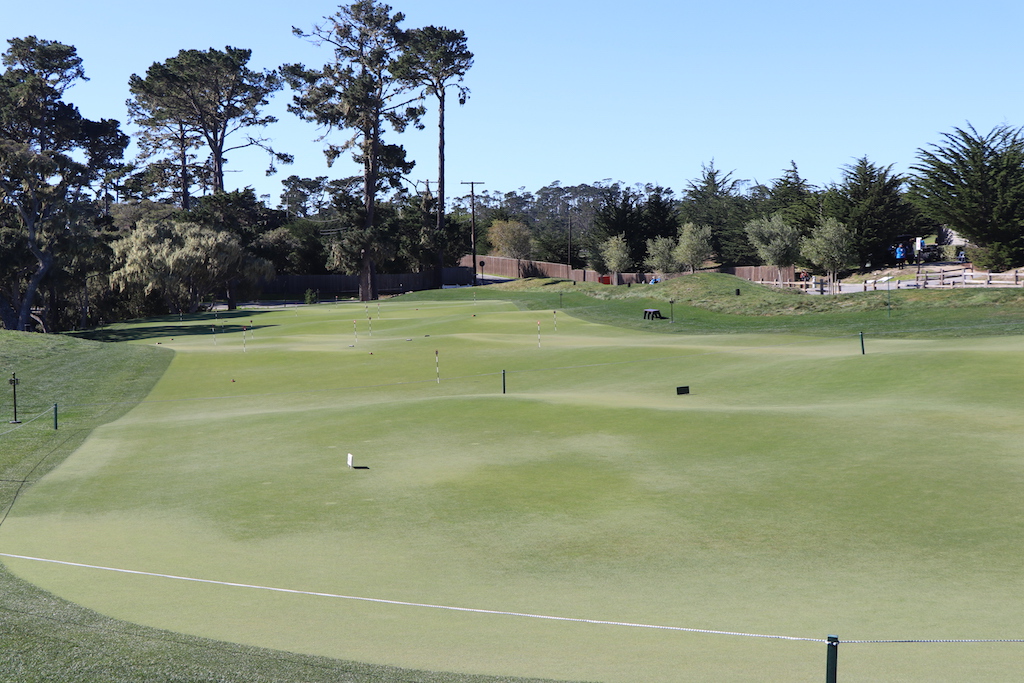
Hole No. 1: “Hay”
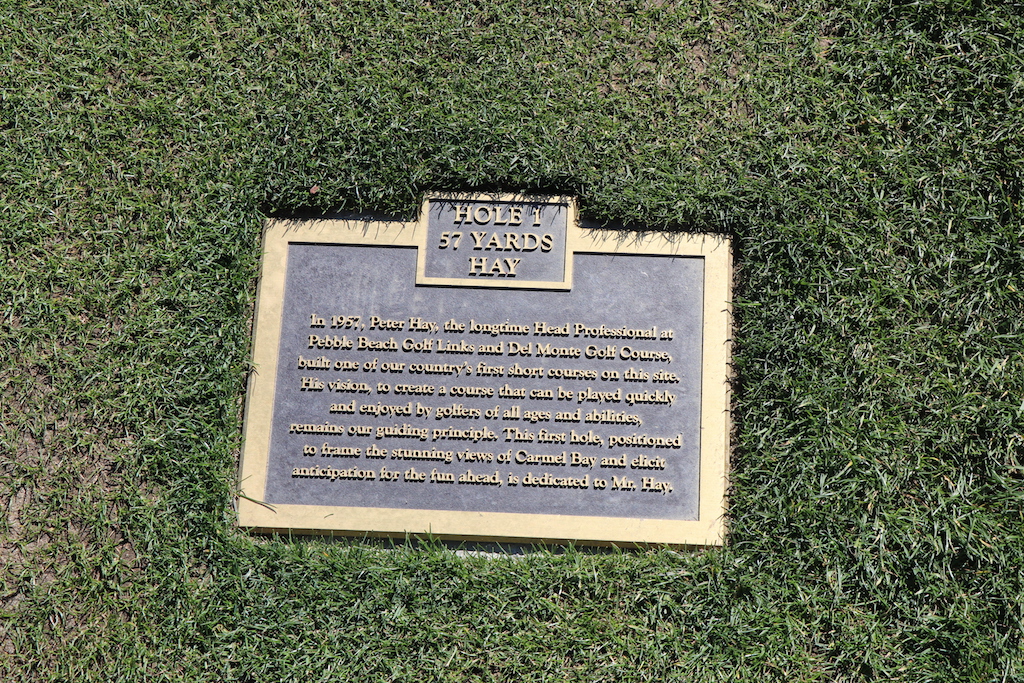

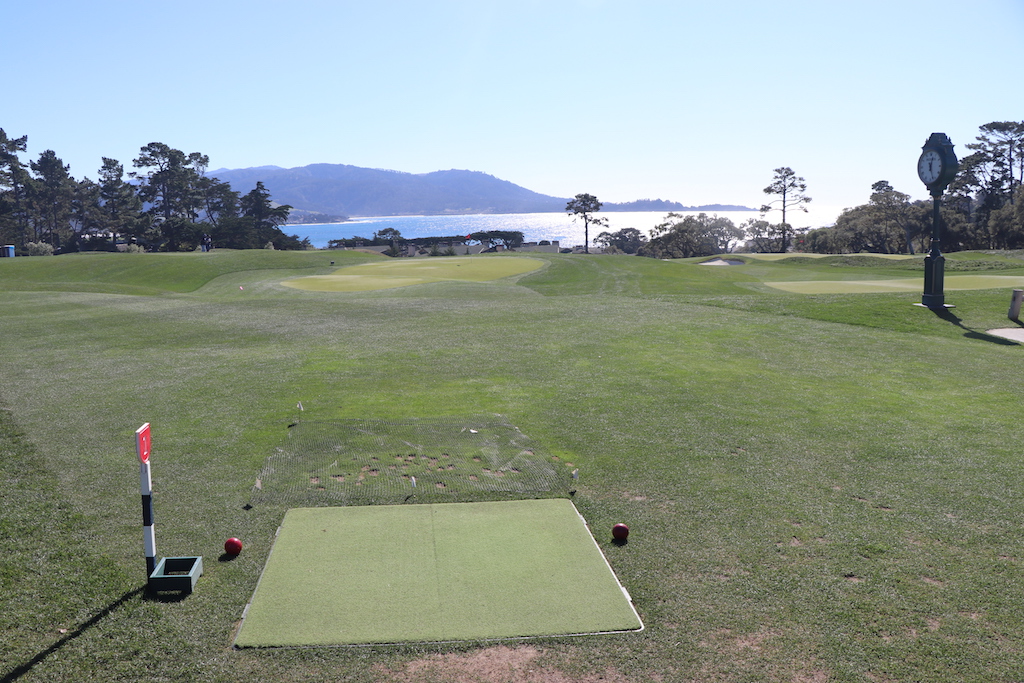
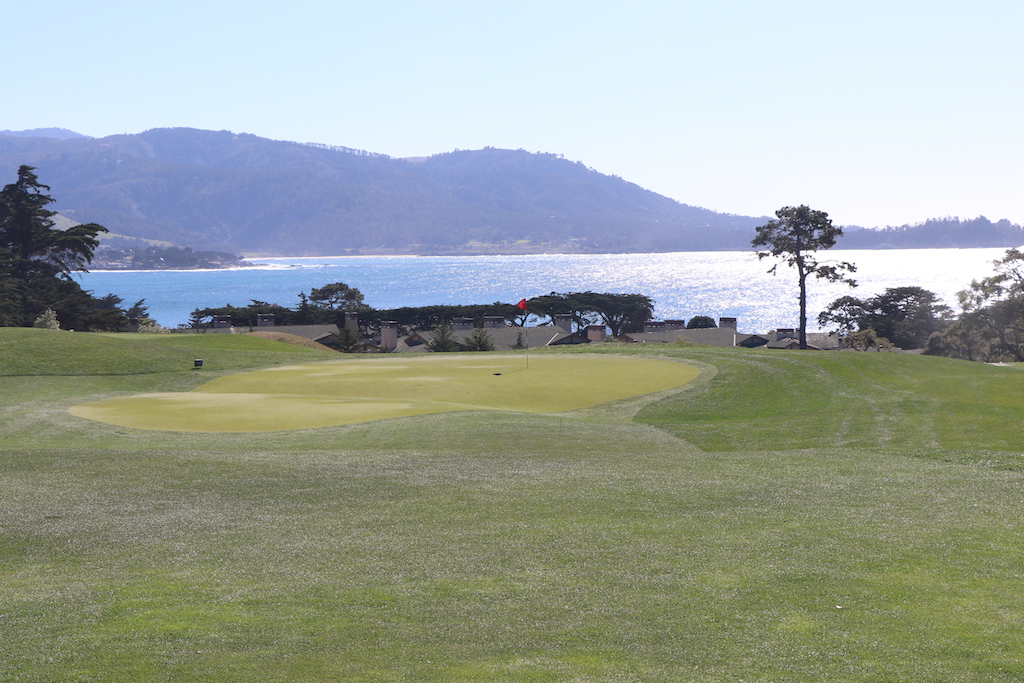
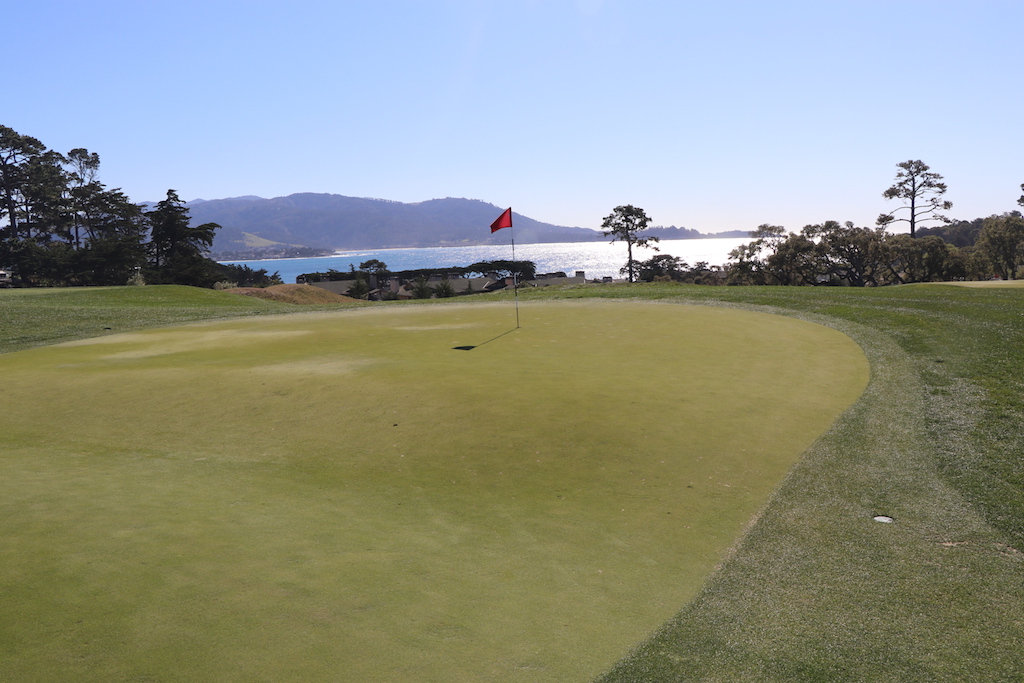
Hole No. 2: “Seven”
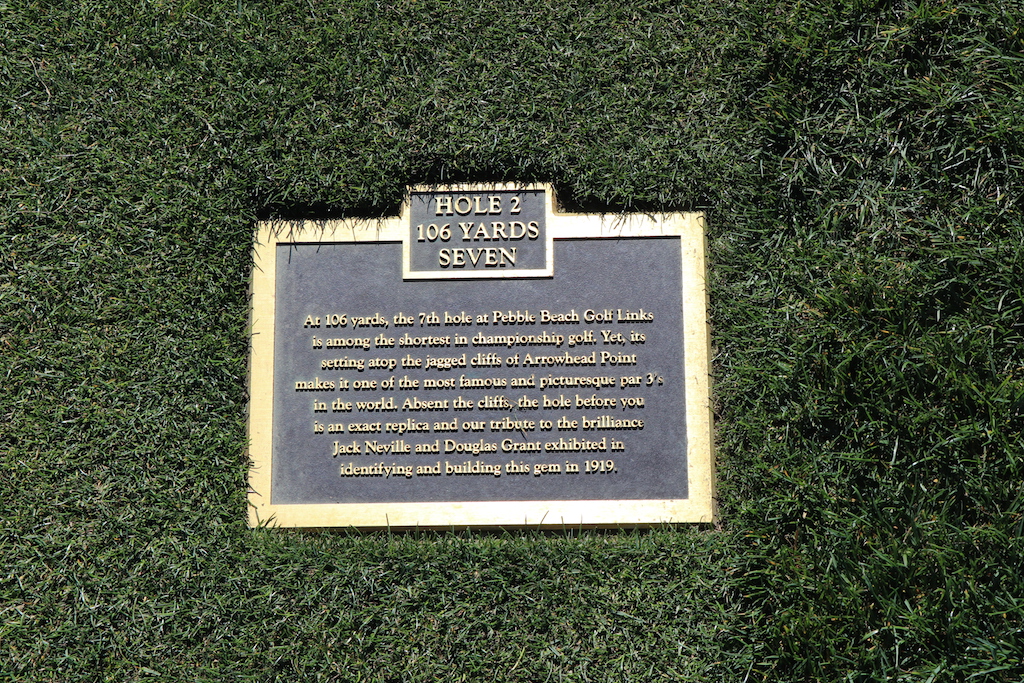
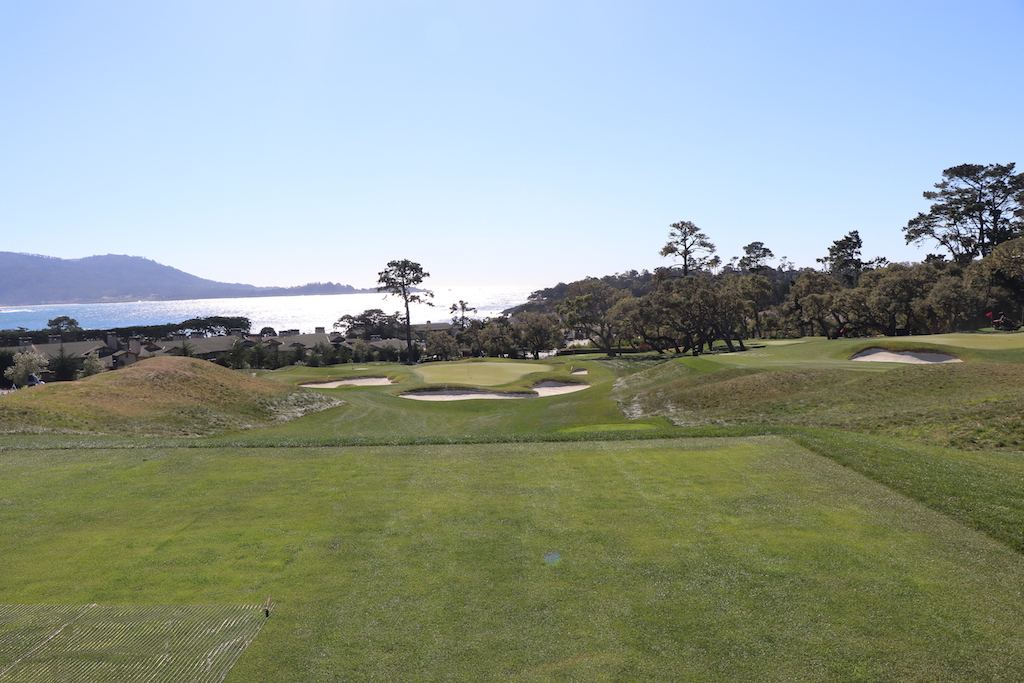
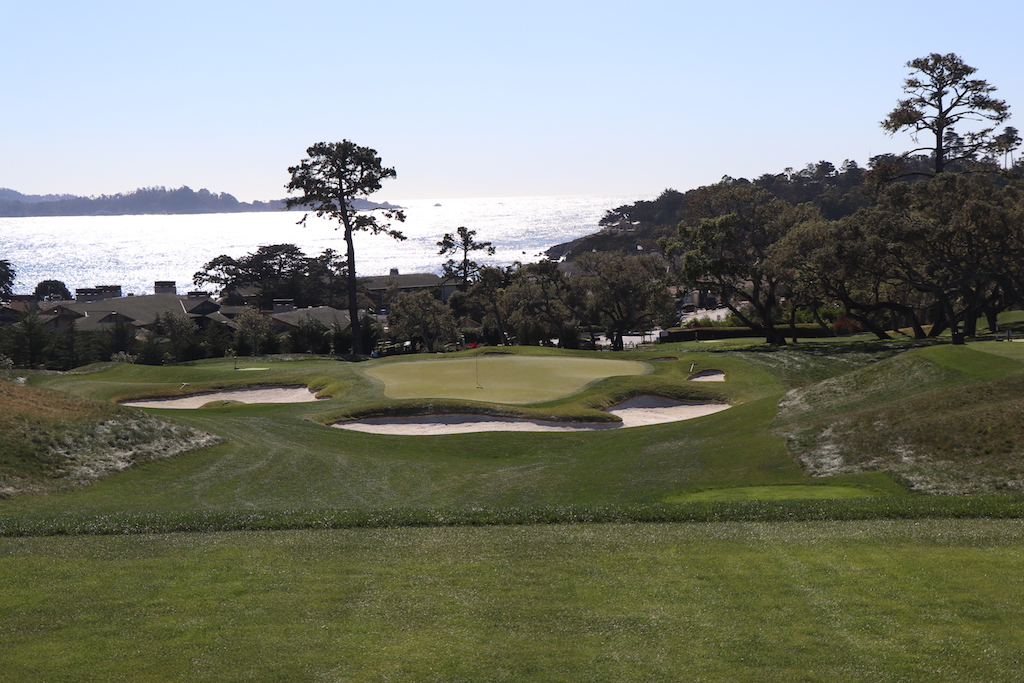
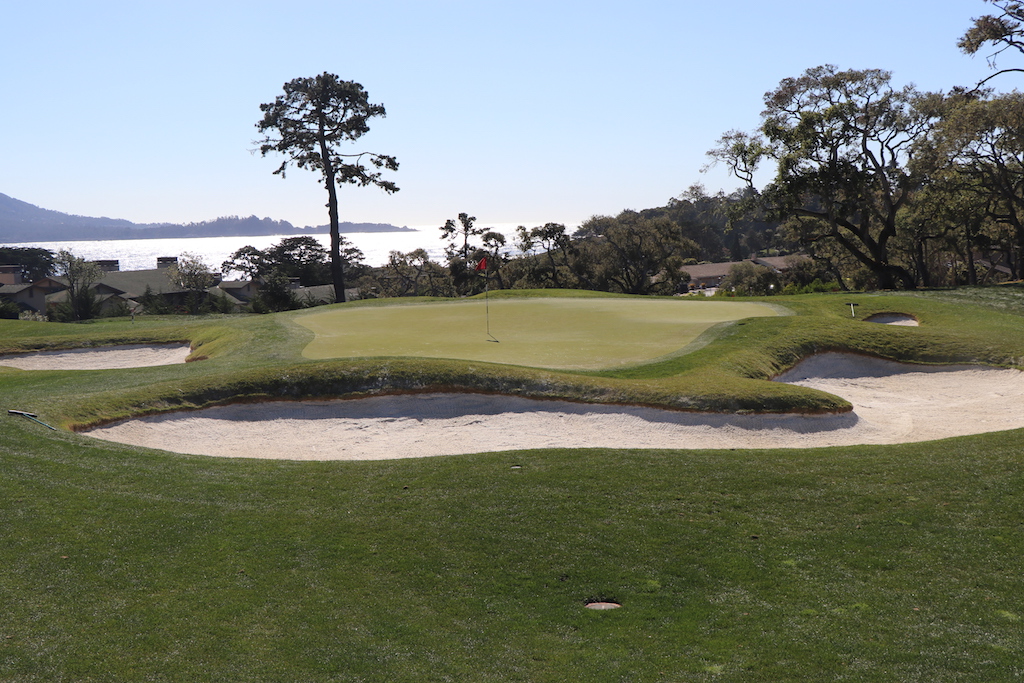
Hole No. 3: “Watson”
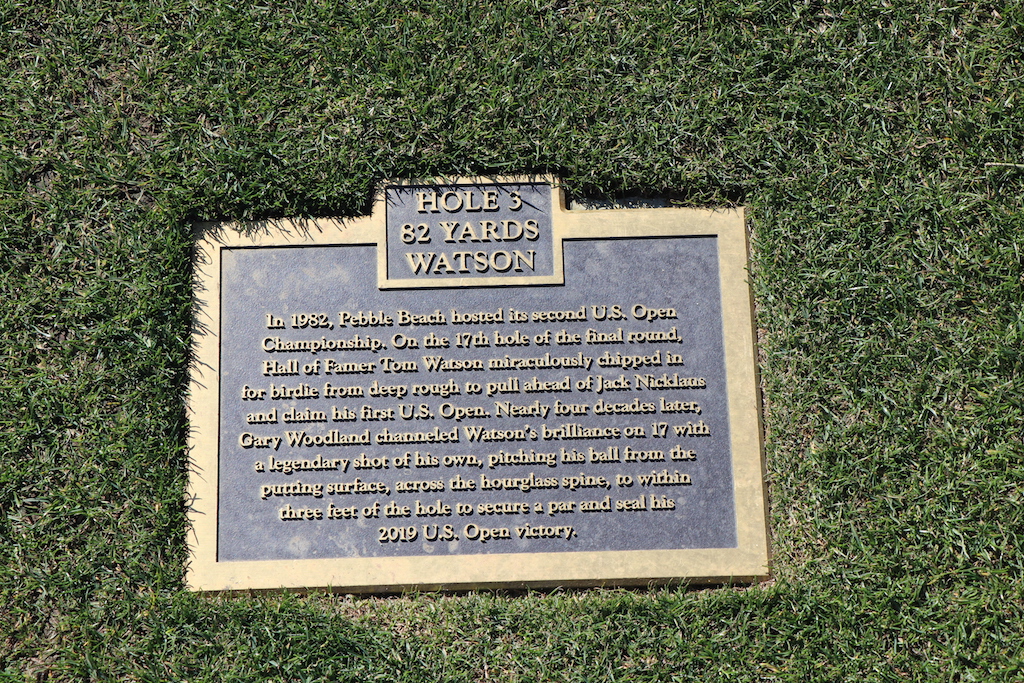
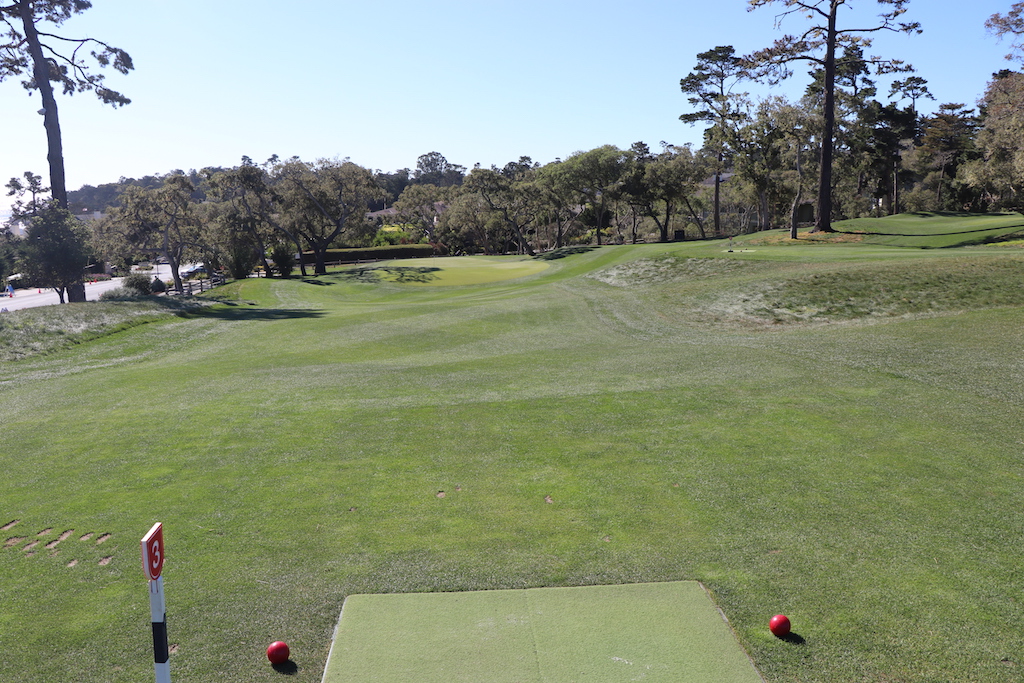
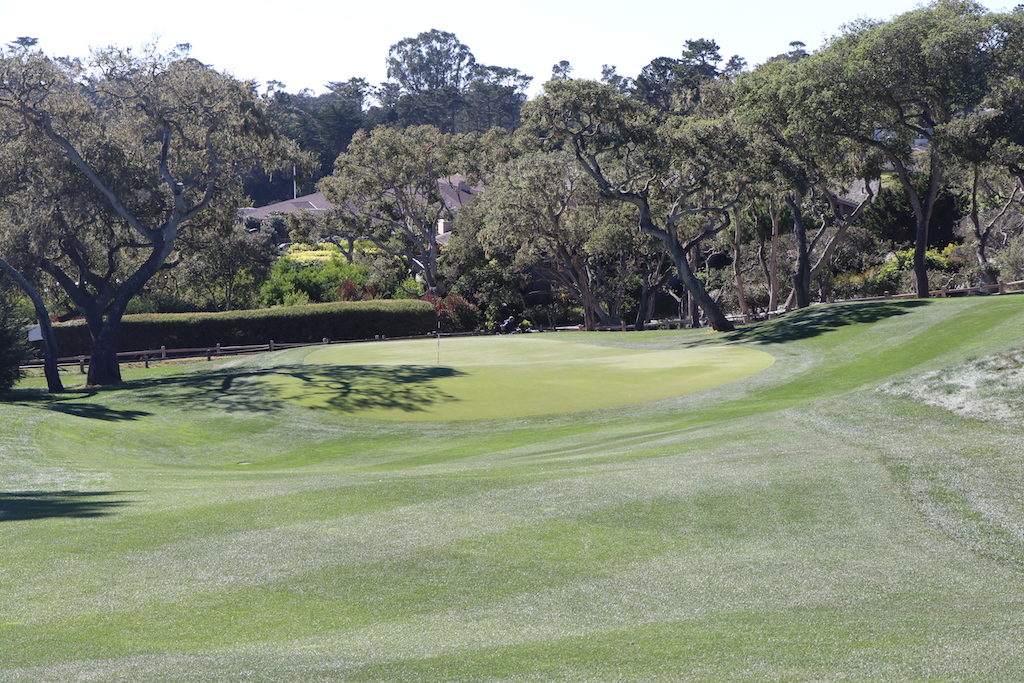

Hole No. 4: “Bing”
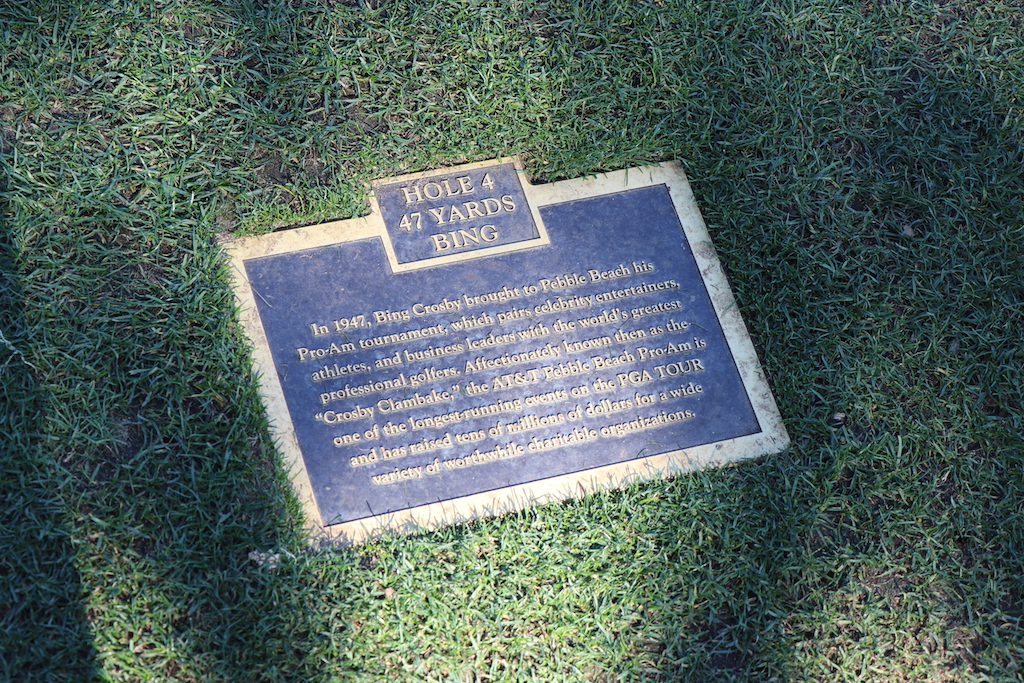
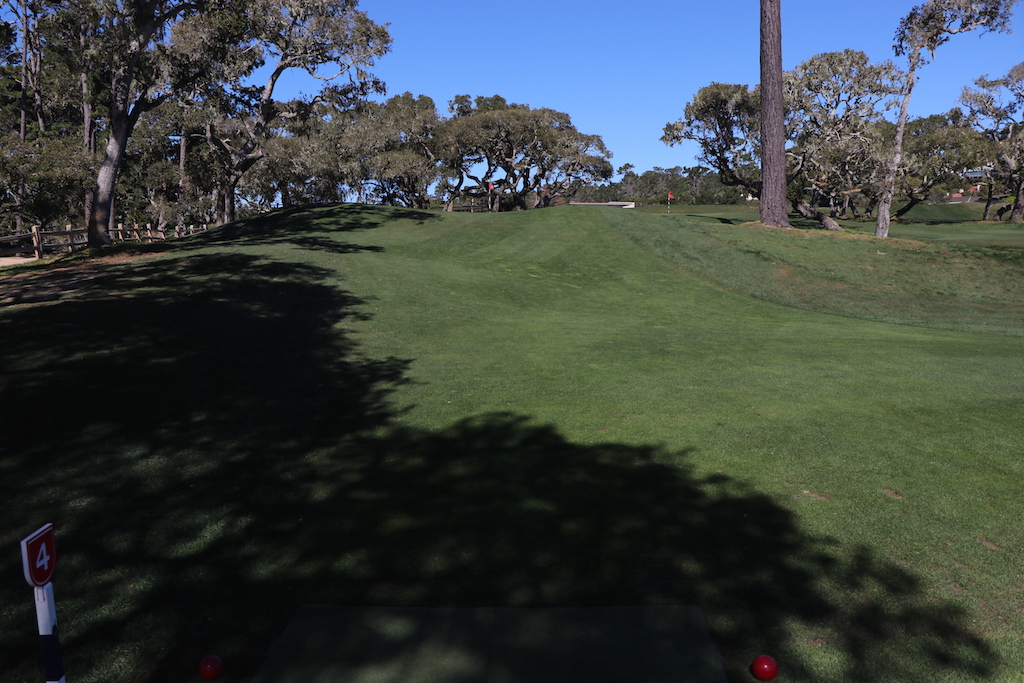
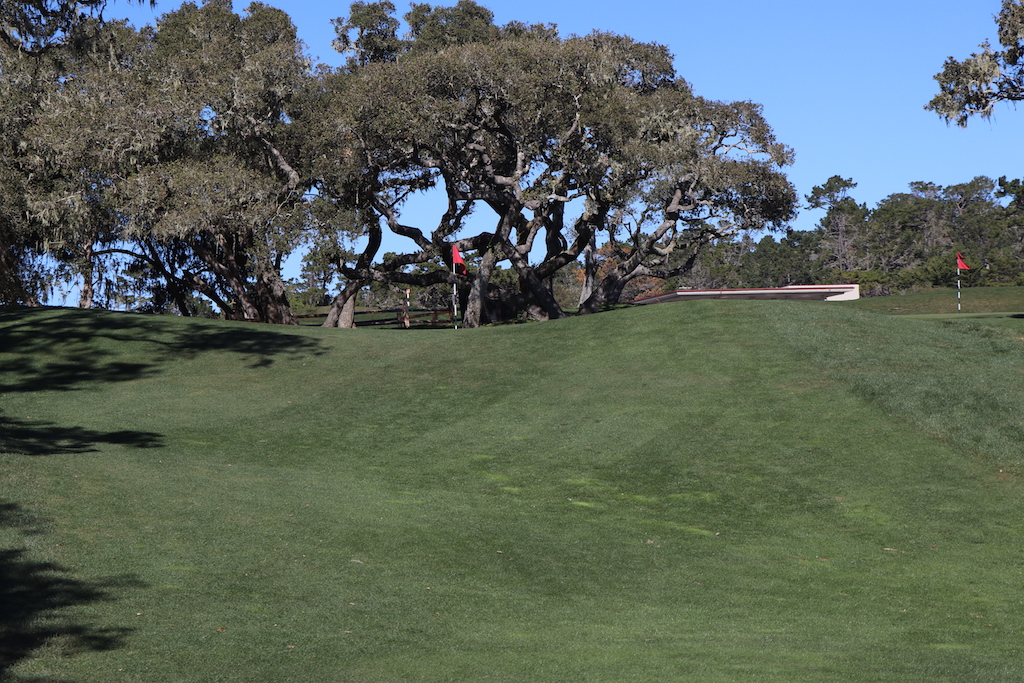
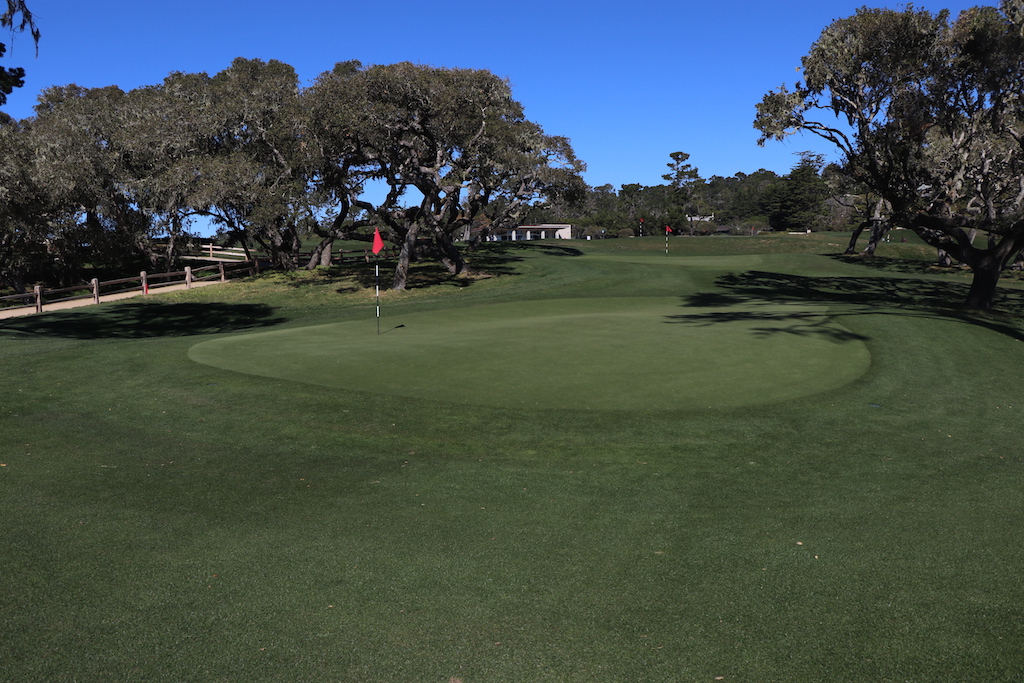
Hole No. 5: “Grace”
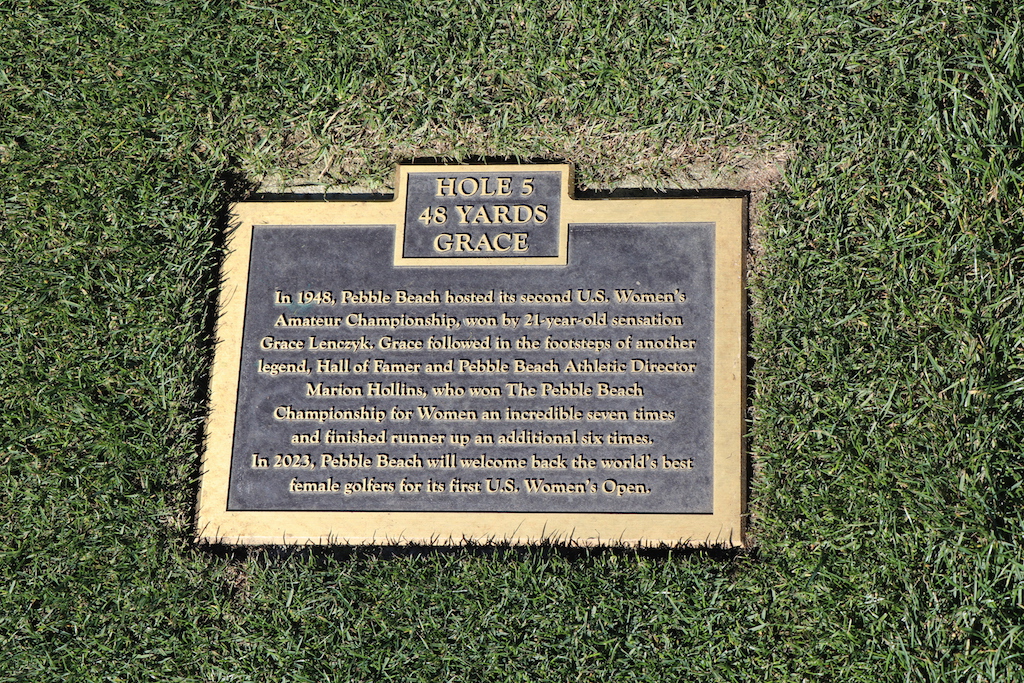
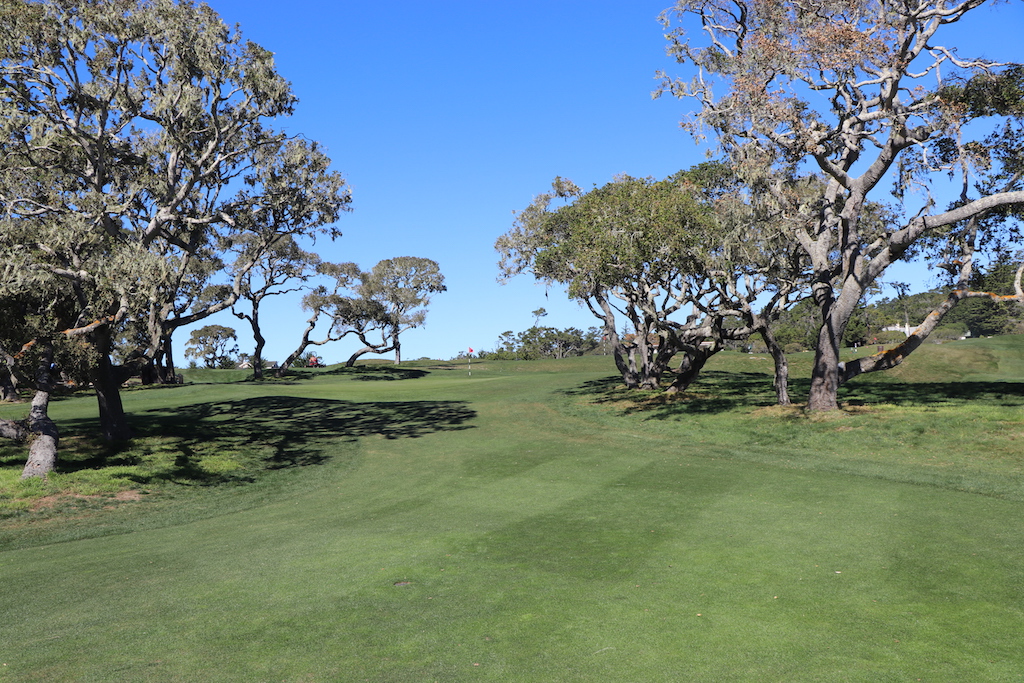
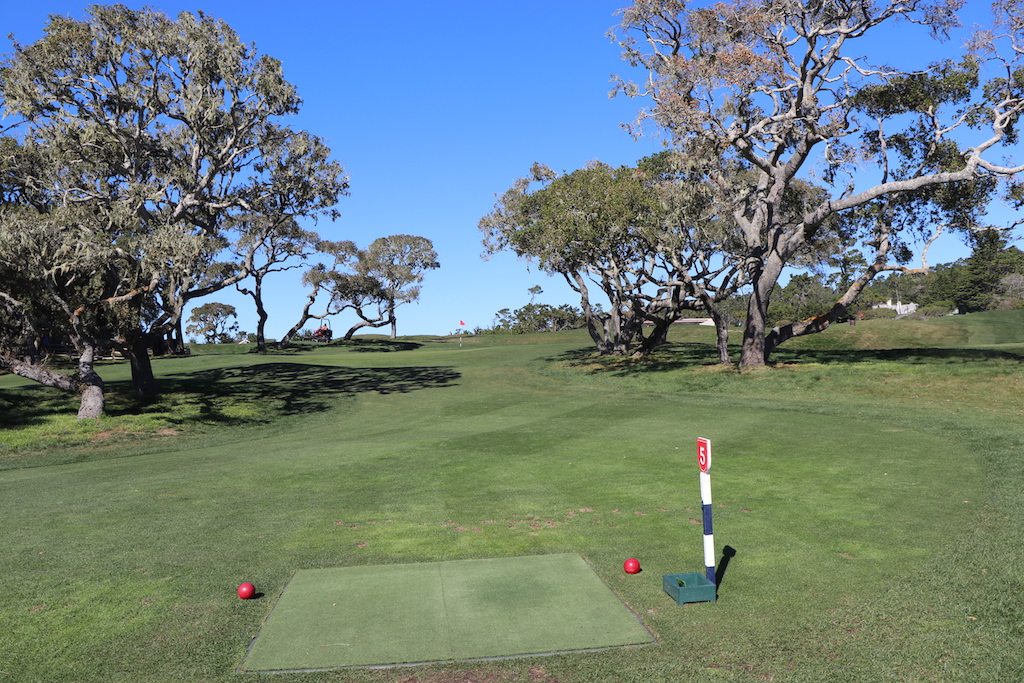
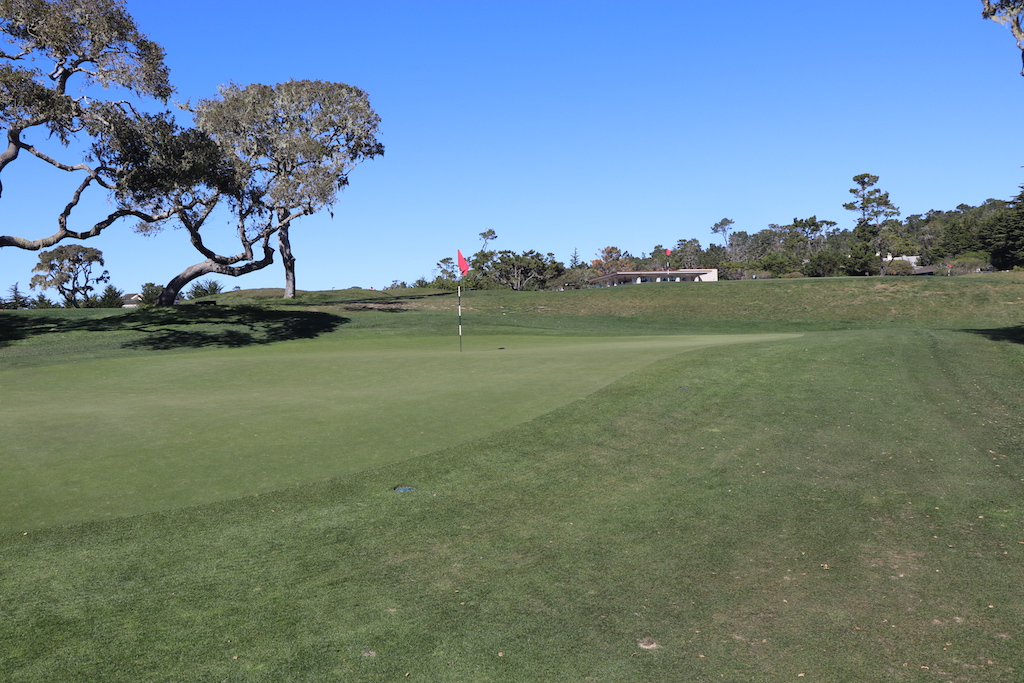
Hole No. 6: “Lanny”
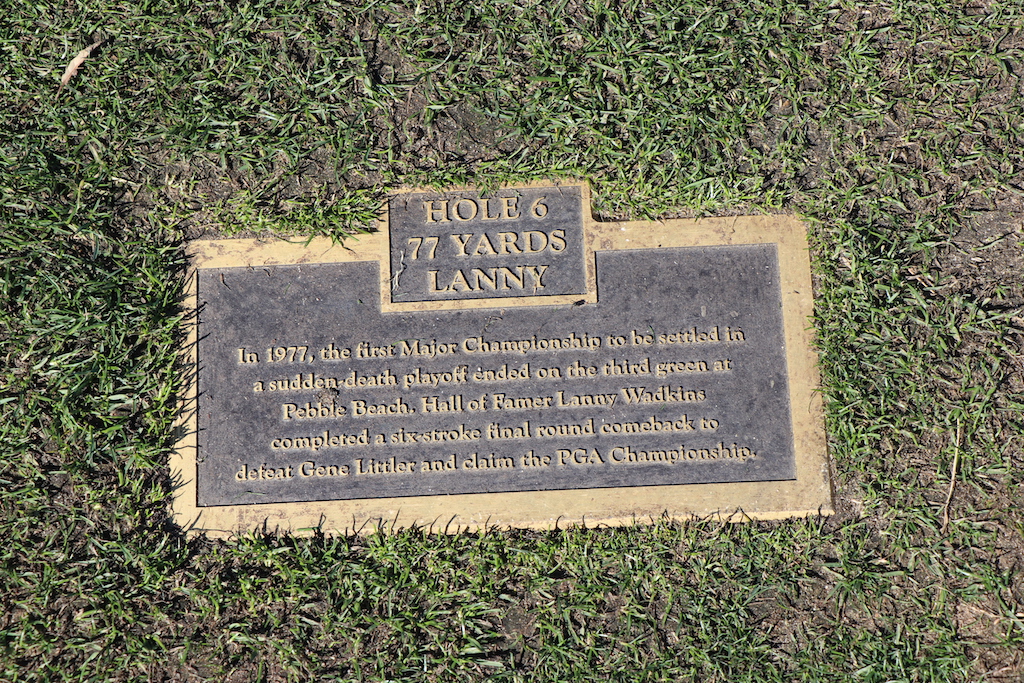
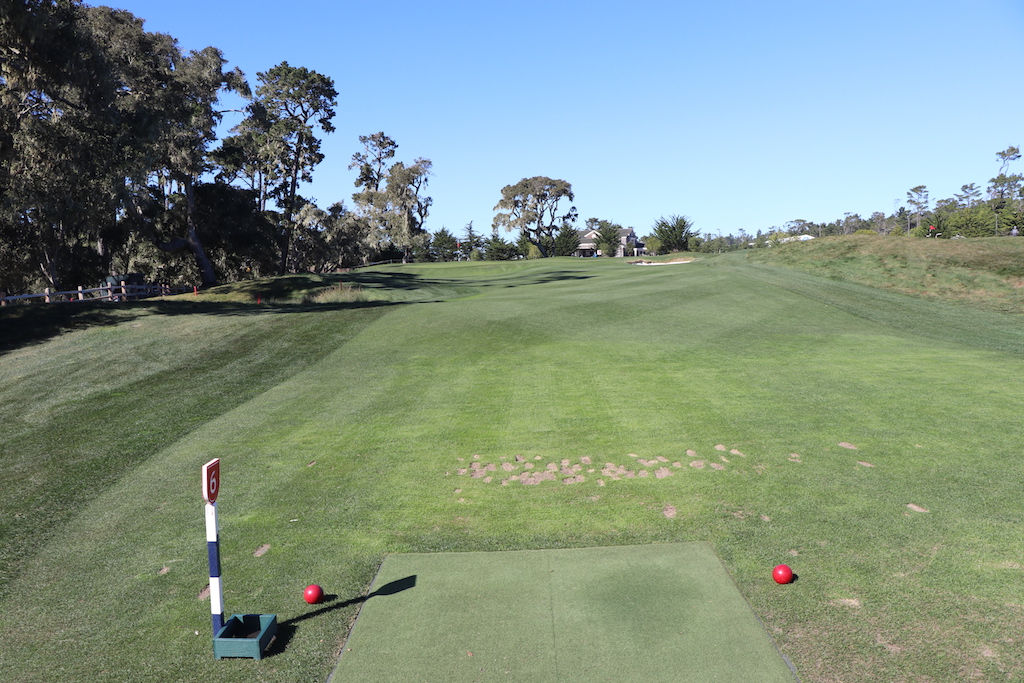
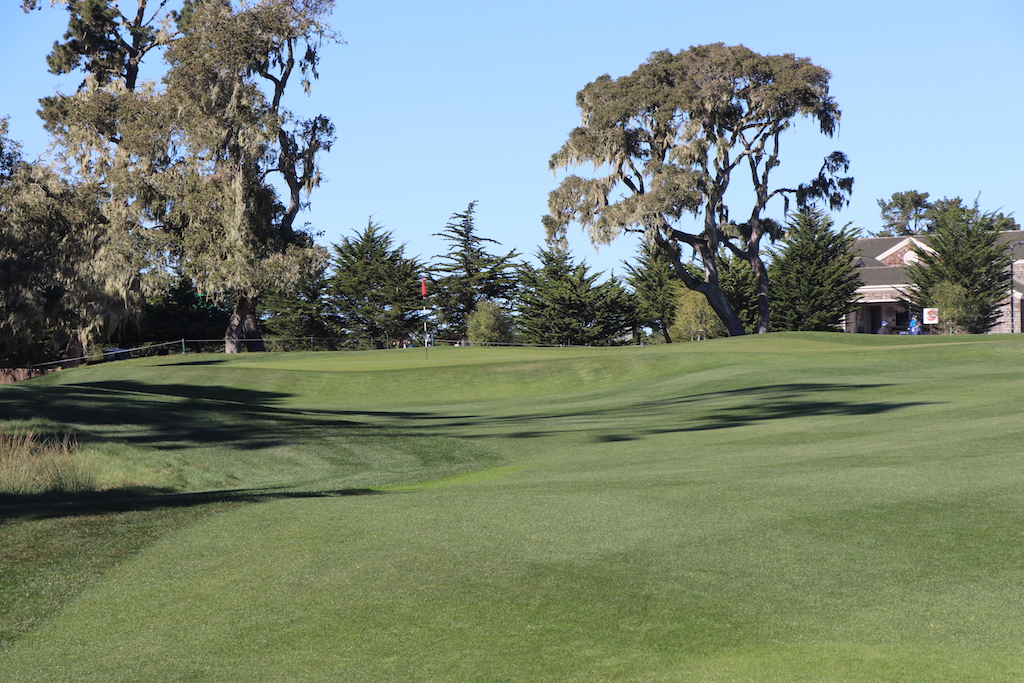
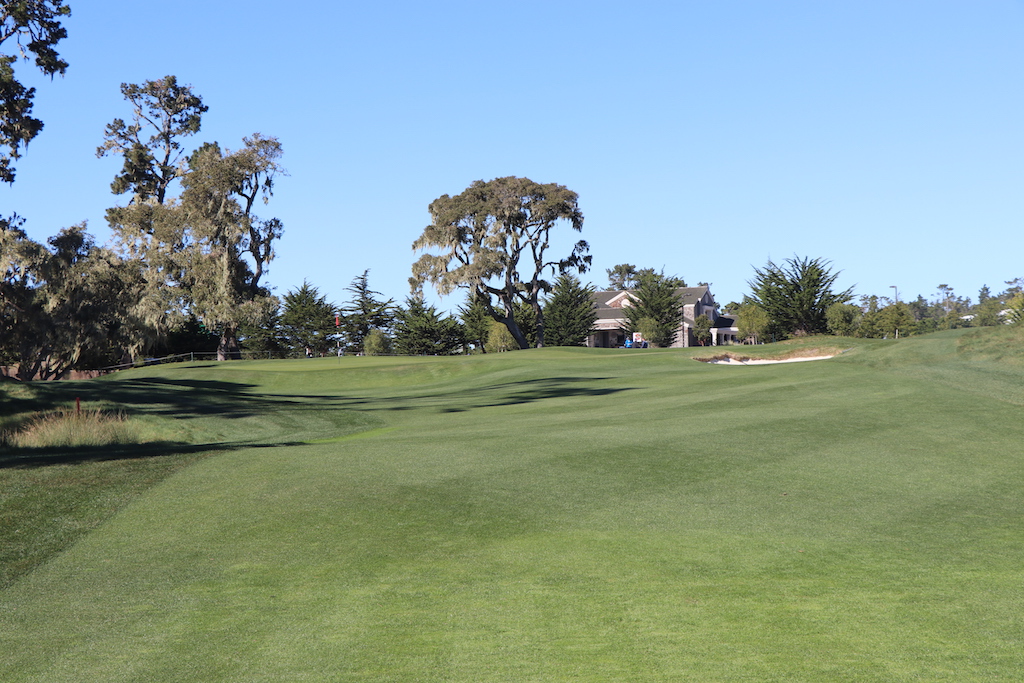
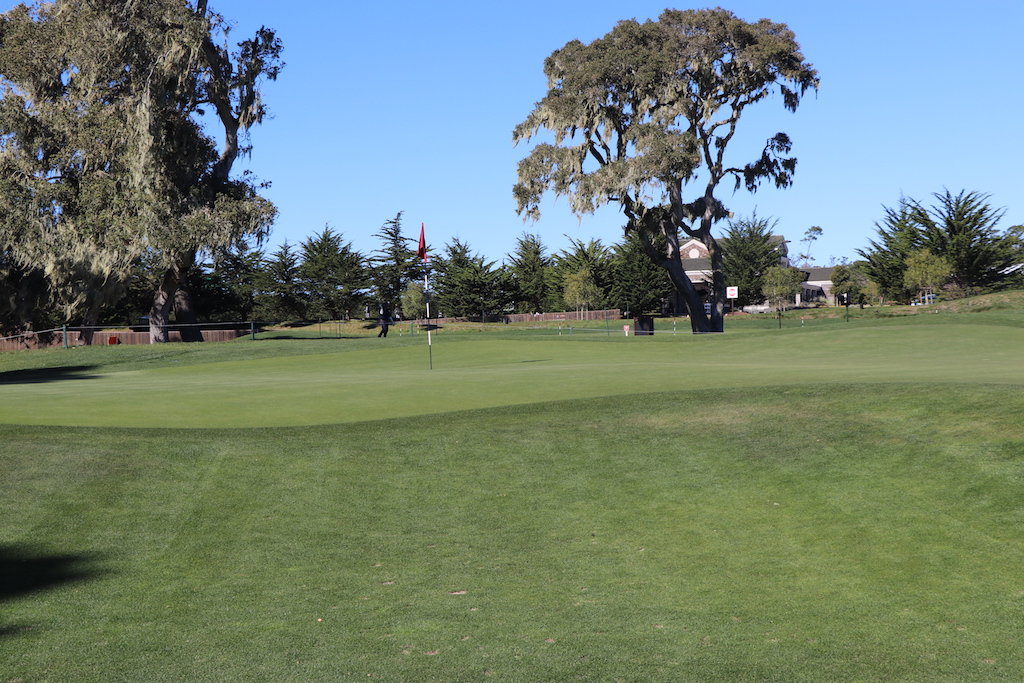
Hole No. 7: “Jack”
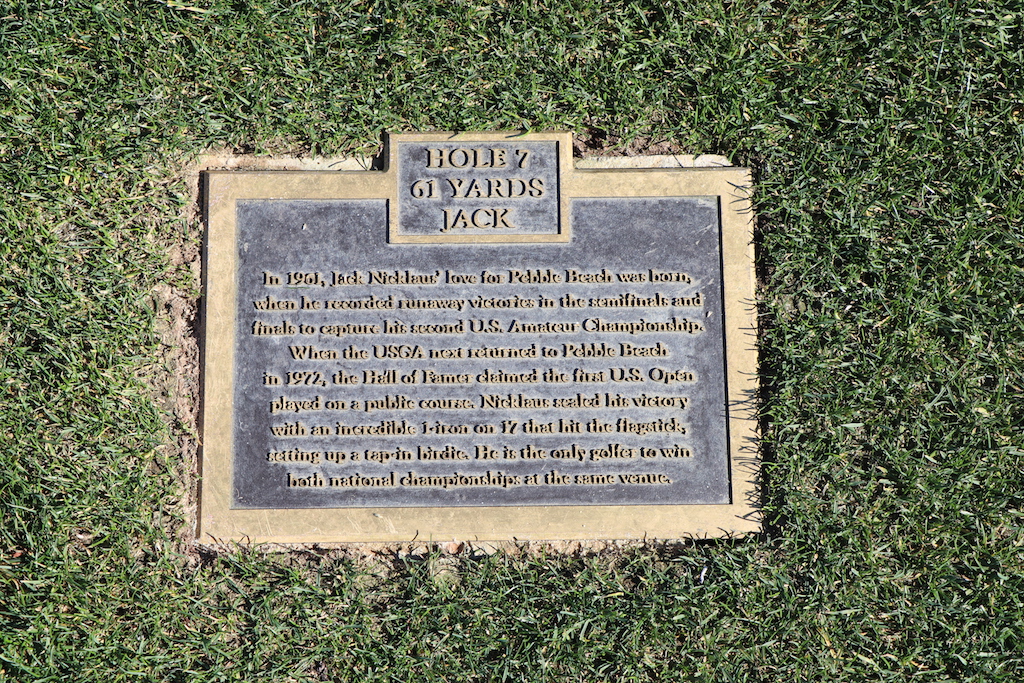
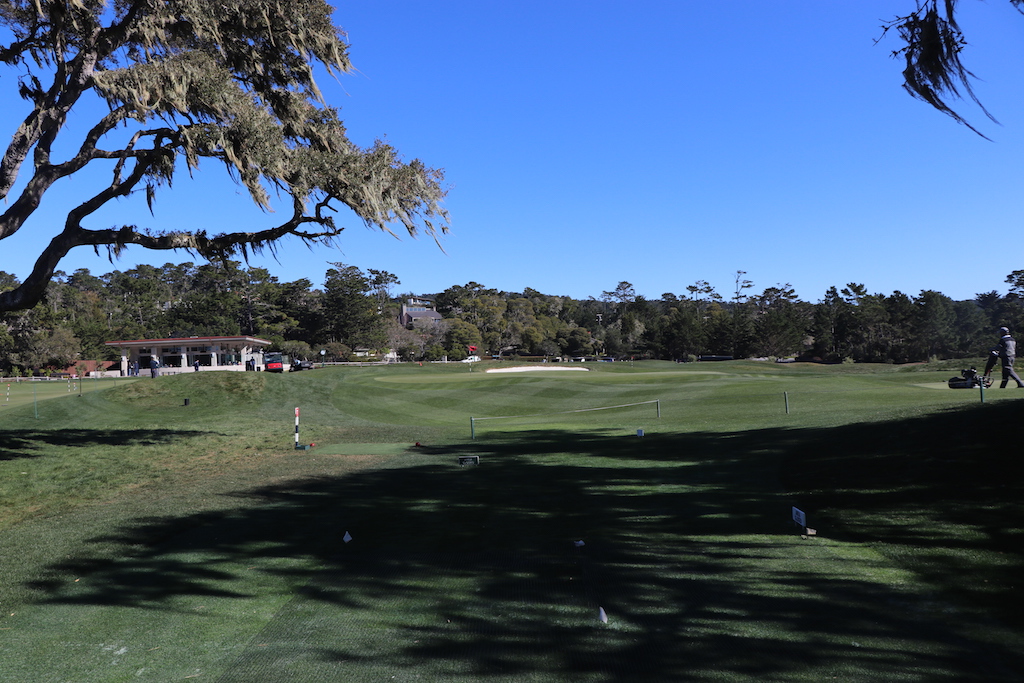
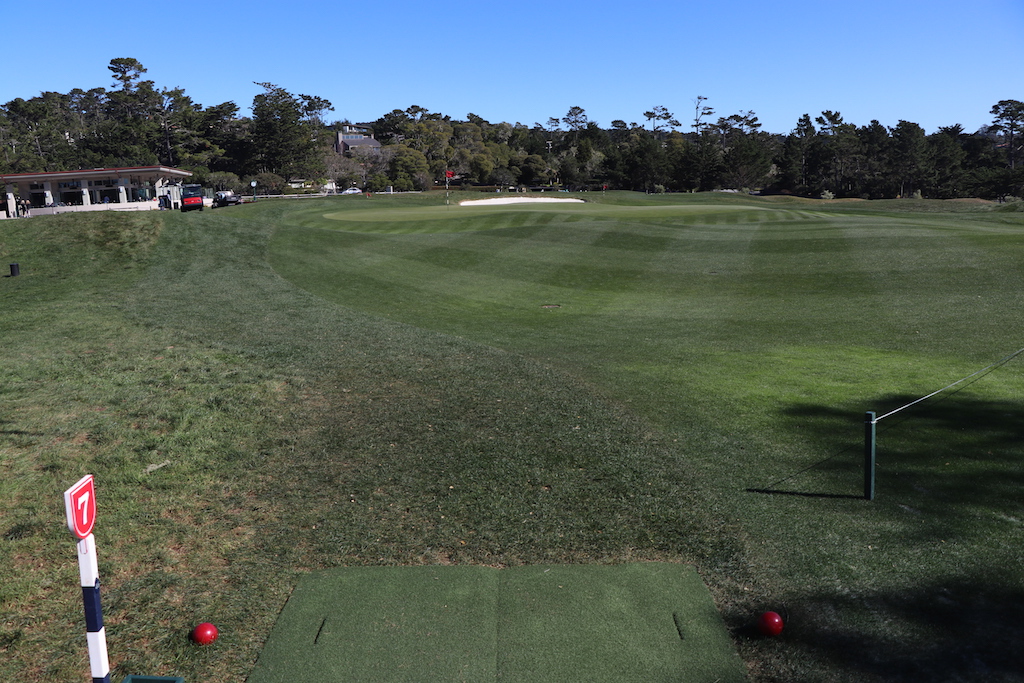
Hole No. 8: “Kite”


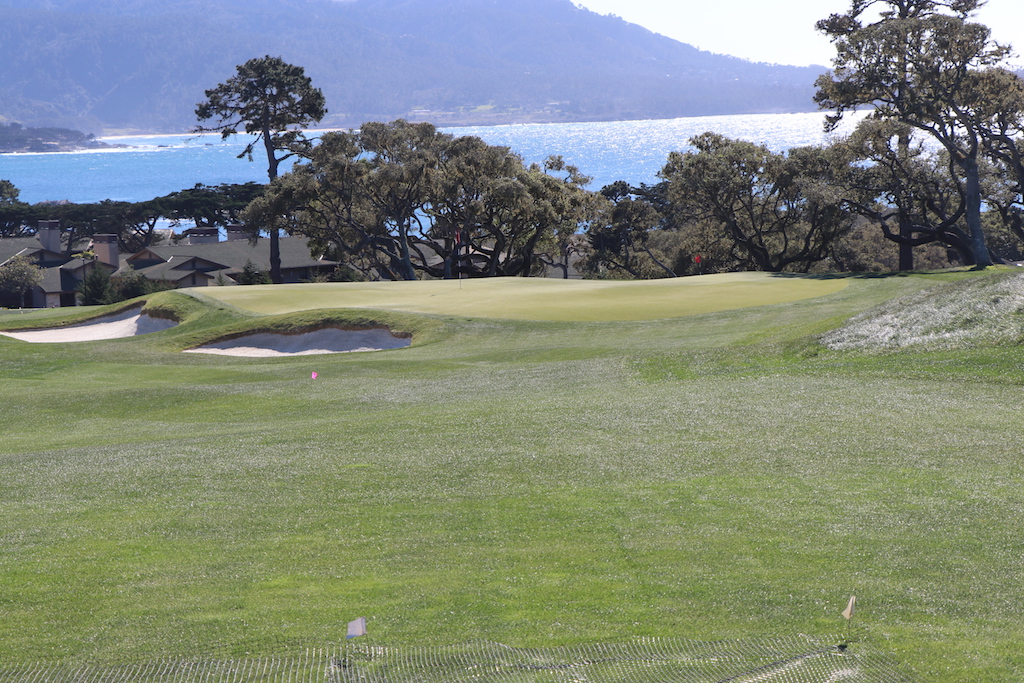
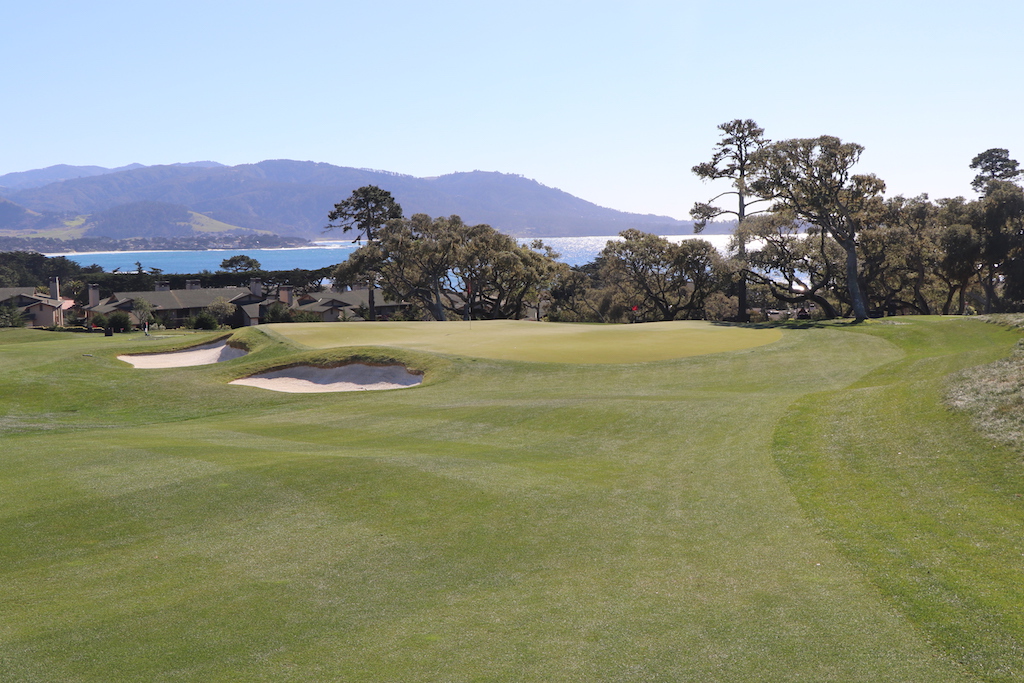


Hole No. 9: “Tiger”
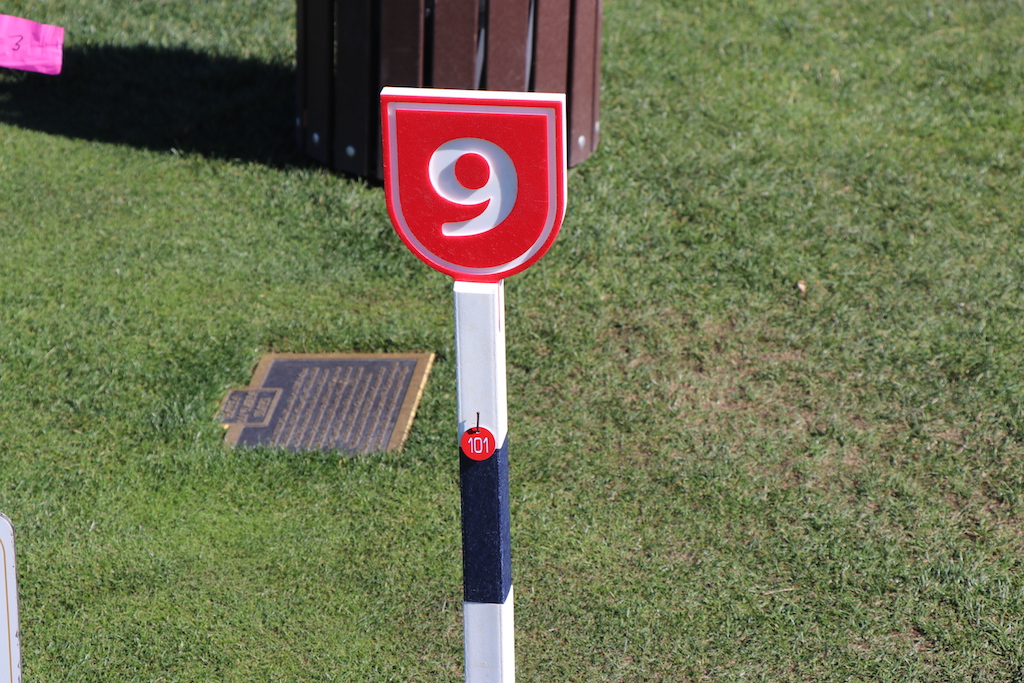

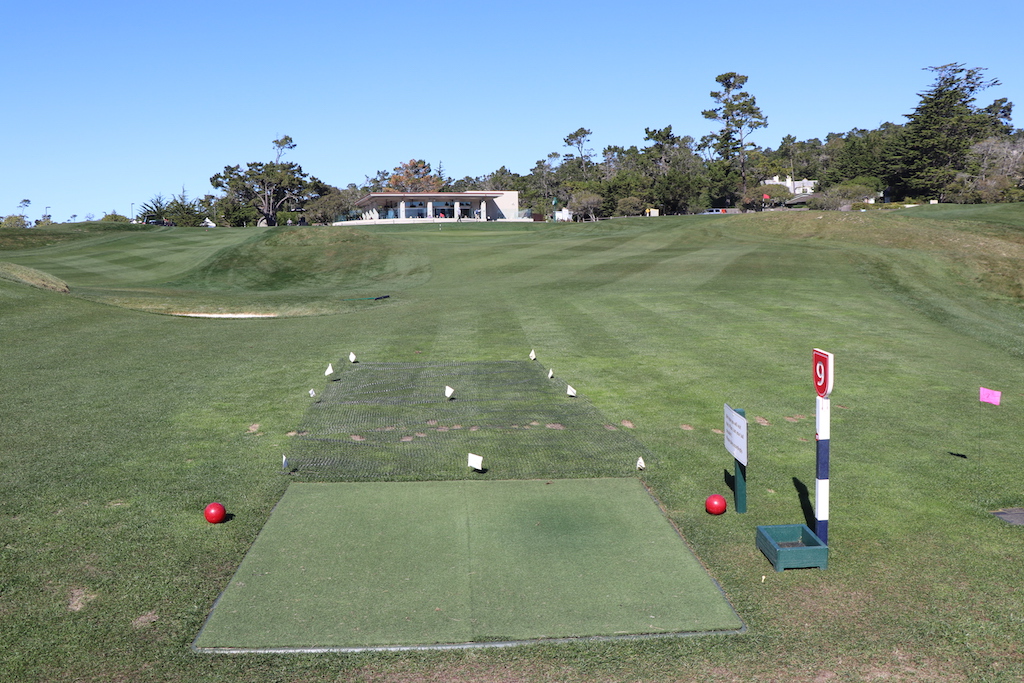
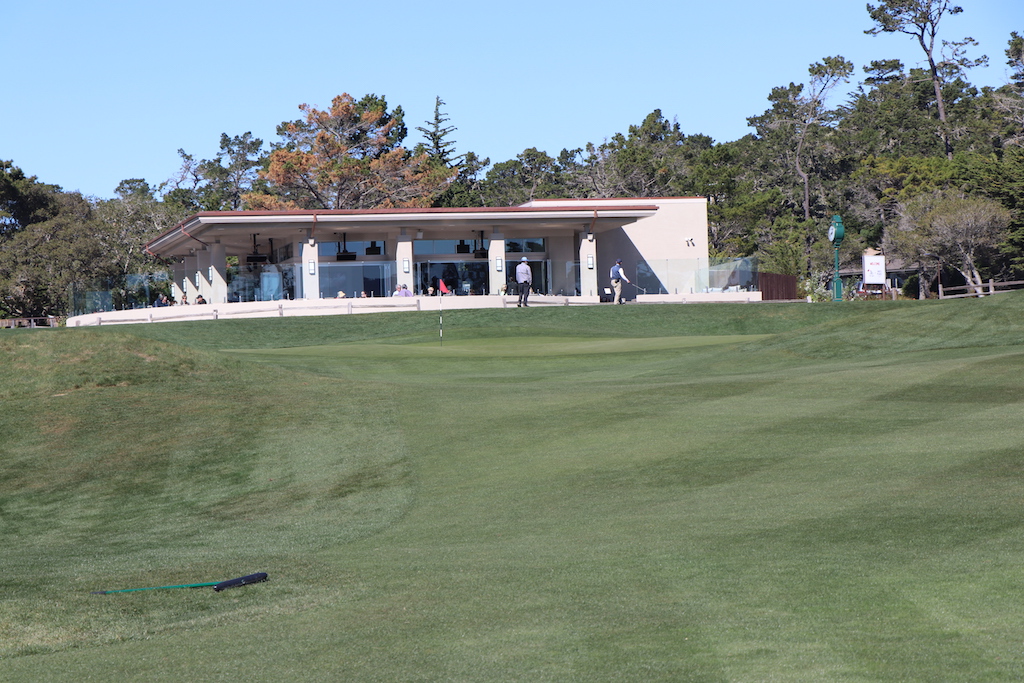

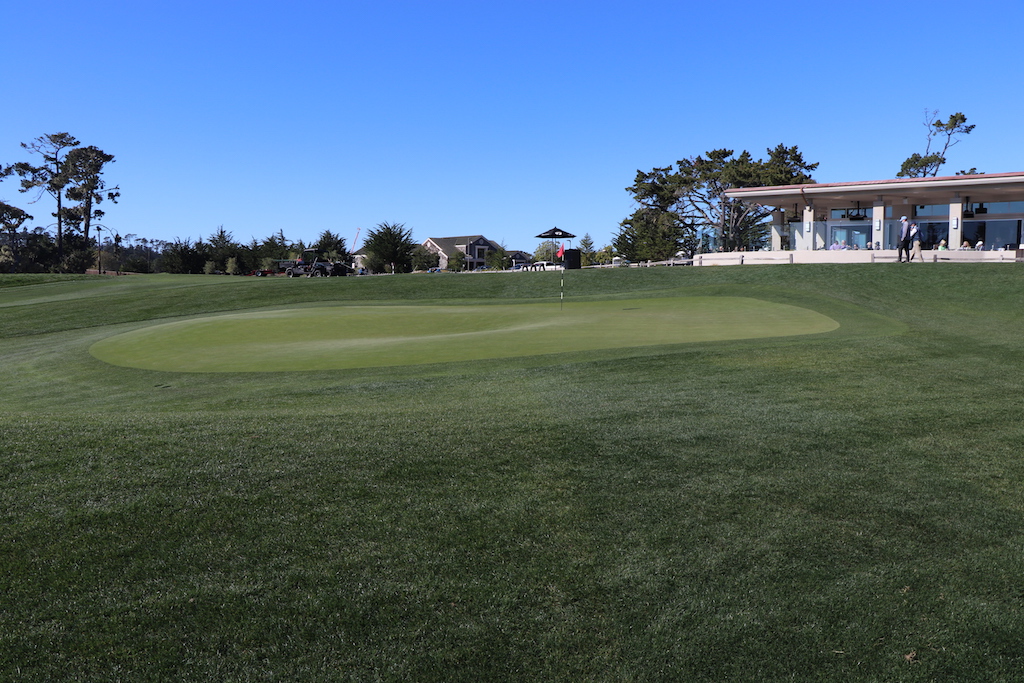
Hay’s Place
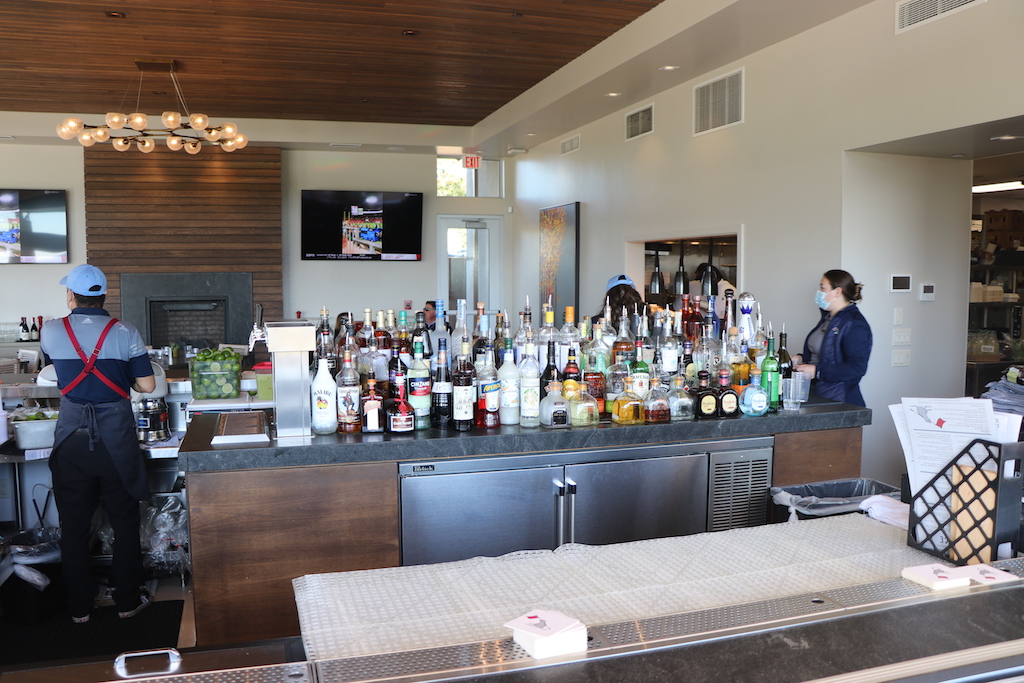
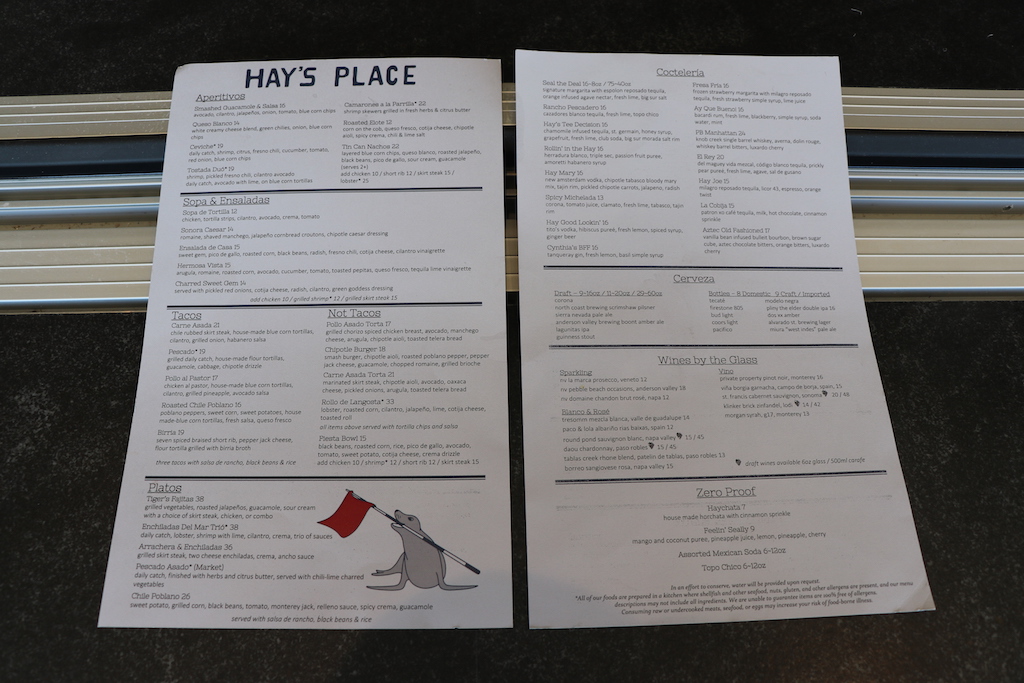
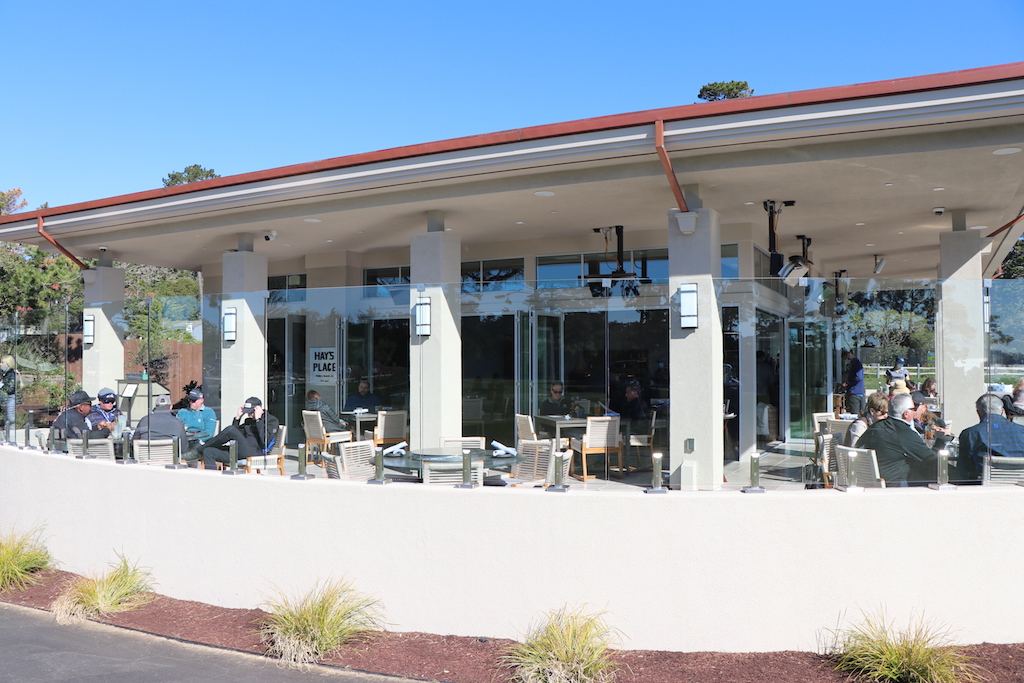
Check out more photos from the 2022 AT&T Pebble Beach Pro-Am here.
- LIKE33
- LEGIT7
- WOW4
- LOL0
- IDHT0
- FLOP0
- OB0
- SHANK5
-

 19th Hole2 weeks ago
19th Hole2 weeks agoDave Portnoy places monstrous outright bet for the 2024 Masters
-

 19th Hole3 days ago
19th Hole3 days agoJustin Thomas on the equipment choice of Scottie Scheffler that he thinks is ‘weird’
-

 19th Hole2 weeks ago
19th Hole2 weeks agoTiger Woods arrives at 2024 Masters equipped with a putter that may surprise you
-

 19th Hole3 days ago
19th Hole3 days ago‘Absolutely crazy’ – Major champ lays into Patrick Cantlay over his decision on final hole of RBC Heritage
-

 19th Hole3 weeks ago
19th Hole3 weeks agoReport: Tiger Woods has ‘eliminated sex’ in preparation for the 2024 Masters
-

 19th Hole1 week ago
19th Hole1 week agoTwo star names reportedly blanked Jon Rahm all week at the Masters
-

 19th Hole1 week ago
19th Hole1 week agoReport: LIV Golf identifies latest star name they hope to sign to breakaway tour
-

 19th Hole1 week ago
19th Hole1 week agoNeal Shipley presser ends in awkward fashion after reporter claims Tiger handed him note on 8th fairway















Jerry Greupner
Mar 22, 2009 at 12:56 am
I am lucky to live in Mr. Miller’s area and to have played nearly all of his designs. They are truly wonderful golf courses.
The Ponds at Battle Creek is a 9-hole layout that will test the skills of the very best players. A friend who is a panelist fof GD states it is the toughest 9 hole course he has ever played. It could be one of the toughest of any 9’s most anywhere. Tough, in this case anyway, is still fair and lots of fun. Just don’t expect to play to your GHIN and be sure to bring plenty of golf balls.